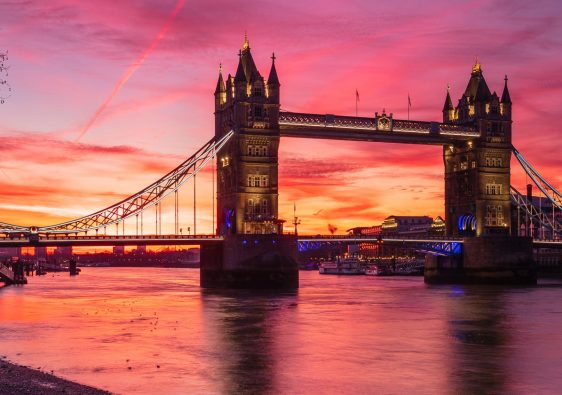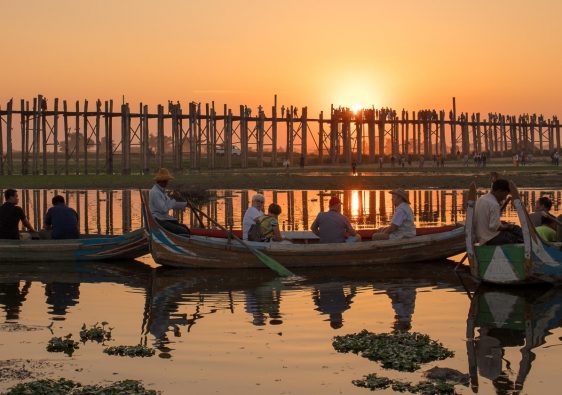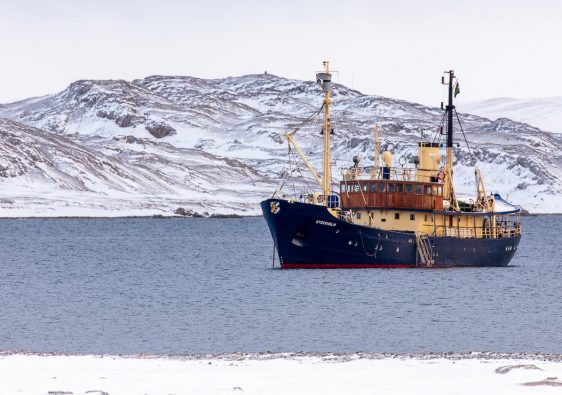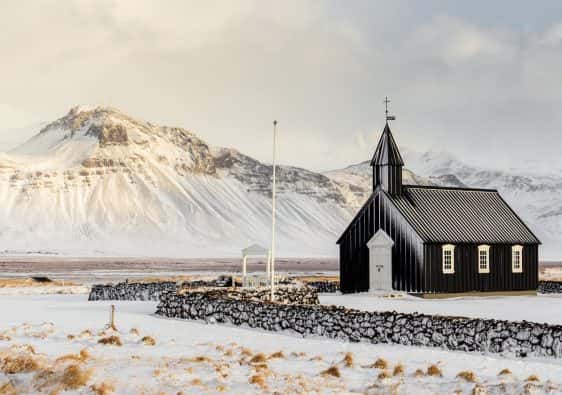In the heart of the Arctic, where the frozen wilderness meets the endless expanse of icy seas, is a place called Svalbard. It was here that I embarked upon the photography trip of a lifetime, hoping to photograph polar bears in their natural habitat.
These magnificent creatures, the undisputed kings of the Arctic, move gracefully across the sea ice and rugged terrain. They embody the spirit of this unforgiving yet breathtakingly beautiful land. To attempt to photograph them, I would immerse myself into their world – as far away from civilisation as I’ve ever been.
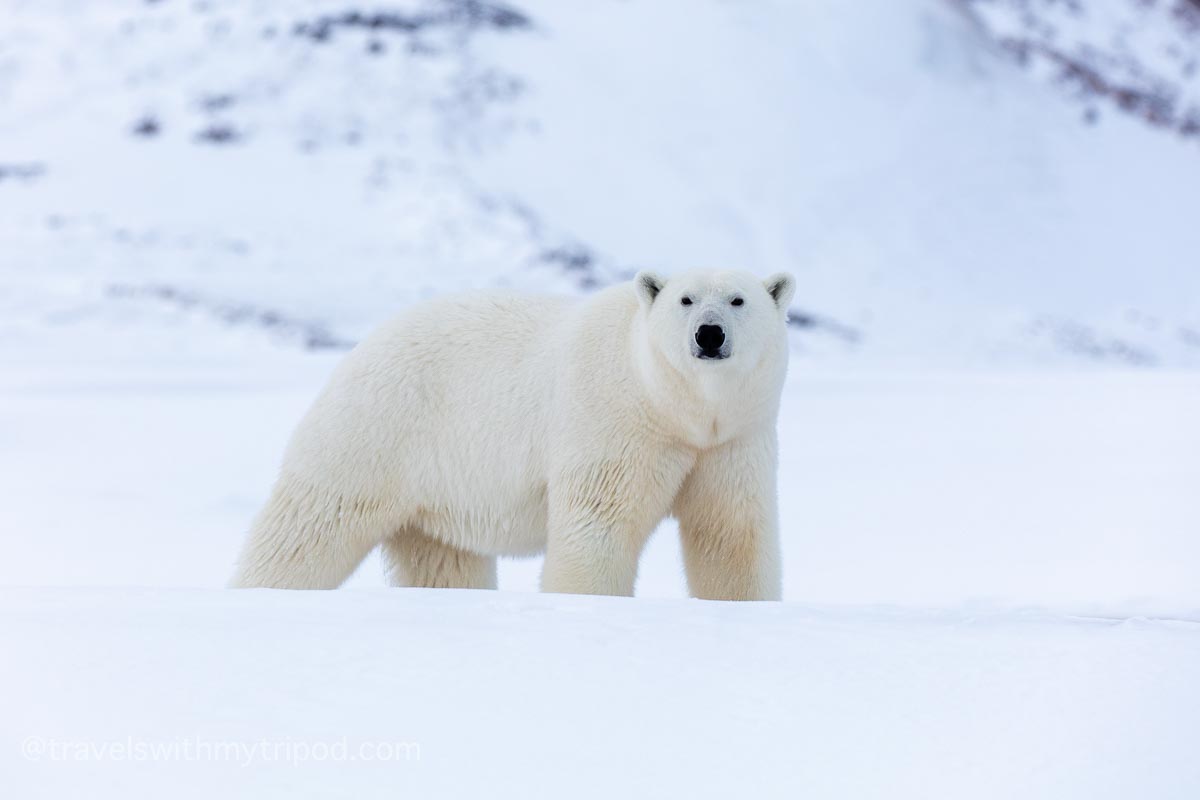
This journey would involve travelling deep into one of the most remote yet beautiful landscapes on earth. We would venture through dramatic fjords, past imposing mountains and towering walls of ice stretching into the distance. As well as polar bears, Svalbard is also home to a diverse selection of other wildlife. This makes it the perfect location for both wildlife and landscape photography.
I was keen to explore the wilderness of this frozen land and learn more about this magical location. During this voyage, I would be following in the footsteps of some of the world’s most intrepid explorers. Read on to discover more about this profound and awe-inspiring experience.
Contents
- Some facts about Svalbard
- Getting to Svalbard
- 24 hours in Longyearbyen
- Setting sail
- My first polar bear sighting
- Death provides life
- Reindeer at Alkhornet mountain
- Walrus beach
- Hamilton Bay
- 80 degrees north
- Another polar bear sighting
- Kinnvika Research Station
- Glacier calving
- A night at Ny-Ålesund
- A Londoner in Ny London
- Skansbukta
- My final thoughts on Svalbard
- Map of places visited
Some facts about Svalbard
Firstly though, where is Svalbard, and what makes it so special?
Svalbard isn’t a country, but is in fact a Norwegian archipelago in the Arctic Ocean. This cluster of islands is located about half-way between the northern coast of Norway and the North Pole. The largest of the islands is Spitsbergen, and this is where the largest settlement, Longyearbyen, is found. Nestled in a fjord on the west coast, Longyearbyen is home to around 2,500 people. It is also the world’s northernmost settlement with a population of over 1,000 people.
First discovered in 1596 by Dutchman Willem Barentsz, the islands soon became a base for whaling. Over the years a number of small settlements appeared. In the years that followed, Svalbard was used as a base for Arctic exploration. From here, several daring attempts to reach the North Pole by air were launched.
Mining also played a large part in Svalbard’s history, with a number of nations trying to extract coal. The majority of these attempts ended without any financial success, but have left permanent memorials to their exploits.
Signs of all these activities are still visible today. In some respects, Svalbard is a time capsule, with these moments of history frozen in time – literally!
Getting to Svalbard
My journey to this Arctic wilderness began in London. Travelling to Svalbard from London involves a couple of flights as you can’t fly direct to Svalbard from the UK. First was an evening flight from Heathrow to Oslo, then the following morning saw me boarding another aircraft – destination Longyearbyen.
As we descended from the clouds, the rugged white landscape was revealed beneath me. The ice and snow appeared to stretch as far as I could see, punctuated with jagged peaks and numerous fjords. The darkness of the cold sea contrasting with the brilliant white of the snow and ice.
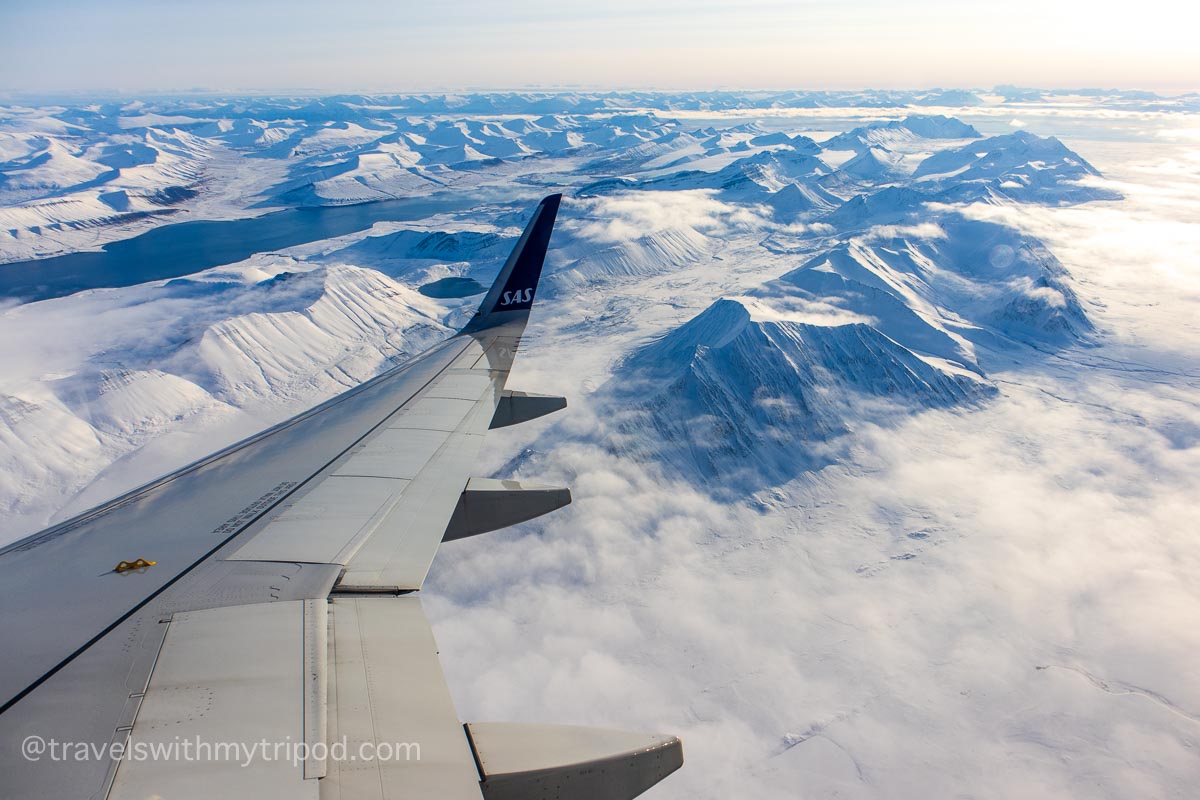
After landing at Longyearbyen’s small airport, the first thing to greet you at the terminal building is a polar bear. Thankfully though not a real one. It was hard not to be excited at the prospect of meeting one of these magnificent animals during my visit. As I waited for my luggage, I wondered what the rest of the trip would have in store.
24 hours in Longyearbyen
For my adventure around Svalbard, I would be living onboard a ship for the next 8 days. However, I wasn’t due to board until the following afternoon so had some time to explore Longyearbyen.
Given its remote location and small population, I wasn’t expecting much however I was pleasantly surprised. The main street features a number of outdoor clothing and souvenir shops, along with a smattering of cafes, restaurants and hotels. For my one night in Longyearbyen, I had a room at the Svalbard Hotell Polfareren. This was warm, comfortable and in a convenient location.
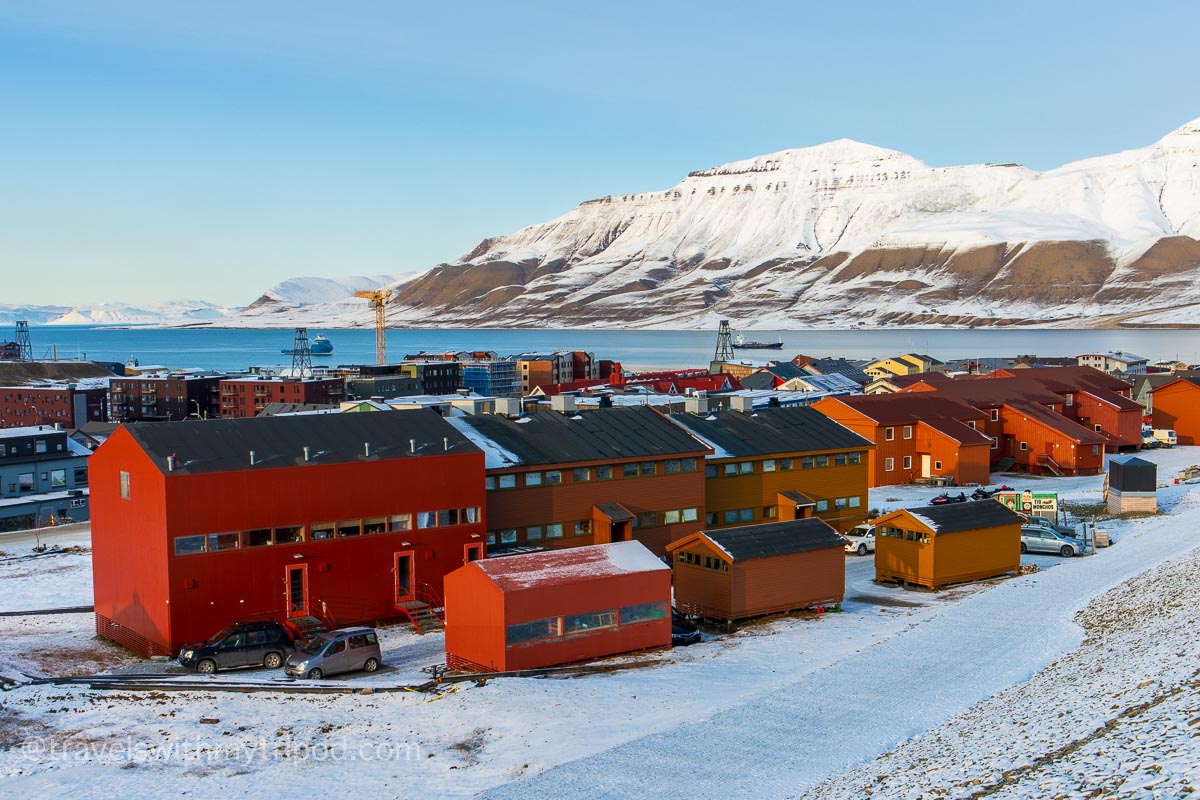
I took the opportunity to buy a few souvenirs, and managed to resist the delicious looking cakes at café Fruene.
There’s also a museum which gave a good history of Svalbard, and I definitely recommend a visit. It was an enjoyable and educational way to spend a couple of hours. It was slightly disconcerting however to see polar bear warning signs on the road out of town!
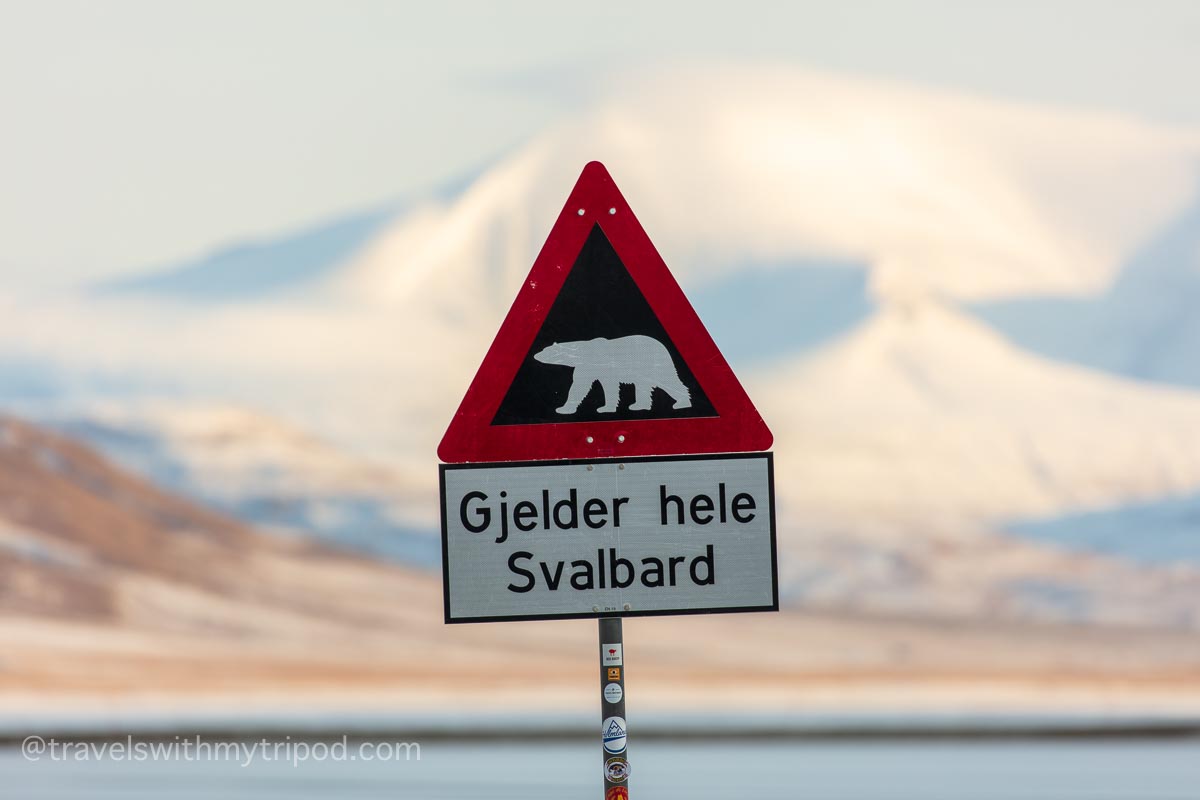
I took the opportunity to catch up on emails and reply to WhatsApp messages, as once we left port we would lose internet access until our return. Given its remote location, I was pleasantly surprised to see that I had 5G service in Longyearbyen.
Setting sail
On Saturday afternoon I boarded my home for the next week, the 40 metre M/S Stockholm. Built in 1953, she is a classic ship and a marvellous piece of maritime history. With berths for just 12 passengers, this would be a very personal voyage of discovery.
I was part of a photography workshop led by Lee Frost and Mark McColl, and arranged through Polar Quest. There were 12 photographers on this trip, plus the ship’s crew and two experienced guides from Polar Quest.
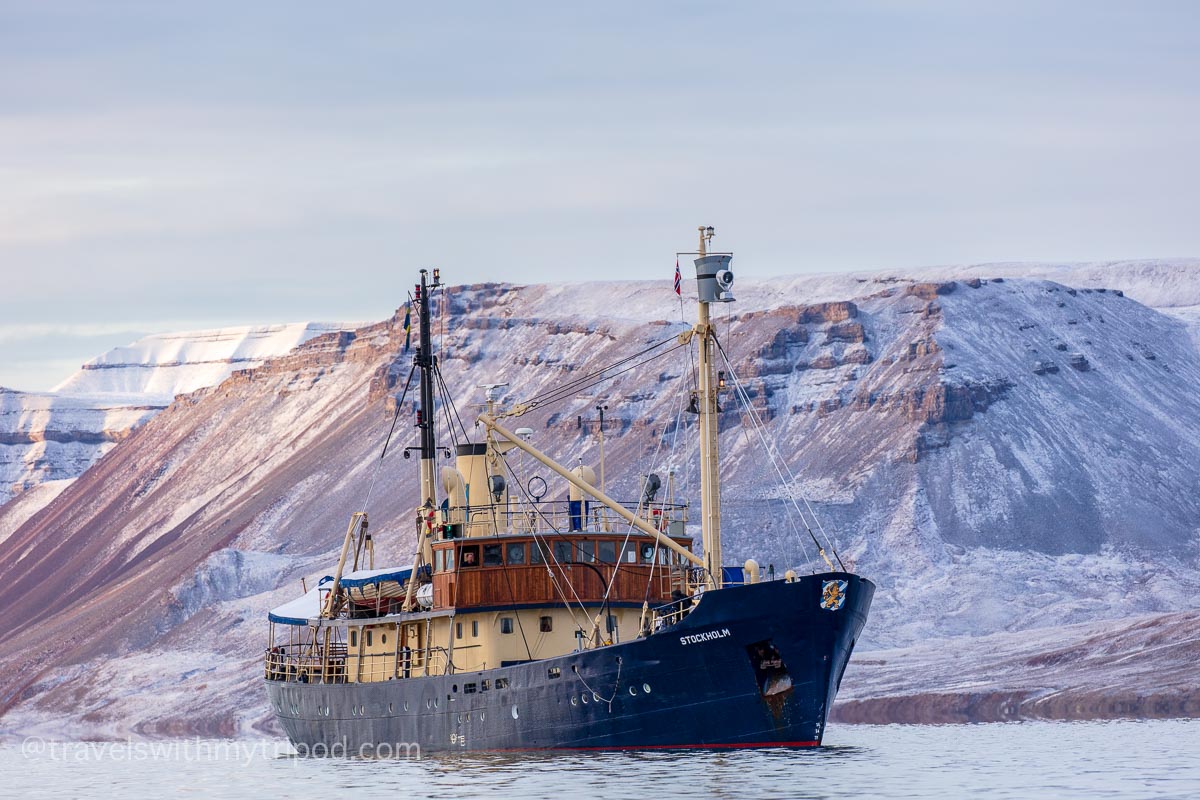
My berth was cosy yet comfortable, and the beautiful wood and brass details around the ship made me feel like I had taken a step back in time. Over the course of the trip, we were looked after exceptionally well by the crew, and the ship really did feel like home. I couldn’t think of a better way to experience Svalbard than on this characterful piece of maritime history.
My first polar bear sighting
I’d been preparing for this trip for a while, and spent weeks planning what to pack. I’d obsessed over what size dry bag to buy, which camera lenses to pack and whether to take a tripod. What I hadn’t done was plan for not seeing a polar bear. The thought hadn’t even crossed my mind until we set sail. Doubts began to set in – what would I do if we didn’t see one? Even in this region, there’s no guarantee that we would spot one, especially if the weather conditions weren’t good.
Incredibly though, within less than a day of setting sail, I would see my first polar bear in the wild!
We had sailed overnight to a small bay, and shortly before dawn the lookouts on the bridge reported seeing a polar bear on the shore. We were woken at 6am, and rushed to don our immersion suits and life jacket – not the easiest thing to do, especially that time in the morning. These bulky suits were essential though, as if you fell into the freezing cold sea without one, survival times would be measured in mere minutes. We clambered into a Zodiac, a small inflatable rubber boat ideally suited for getting closer to shore.
As we motored away from the ship, in the distance at the top of a small cliff was a snoozing polar bear, resting on the ice. If I could have pinched myself through several layers of clothing and an immersion suit, I would have done – this was incredible! I alternated between taking photos and simply looking at this magnificent creature in awe, thinking how lucky I was.
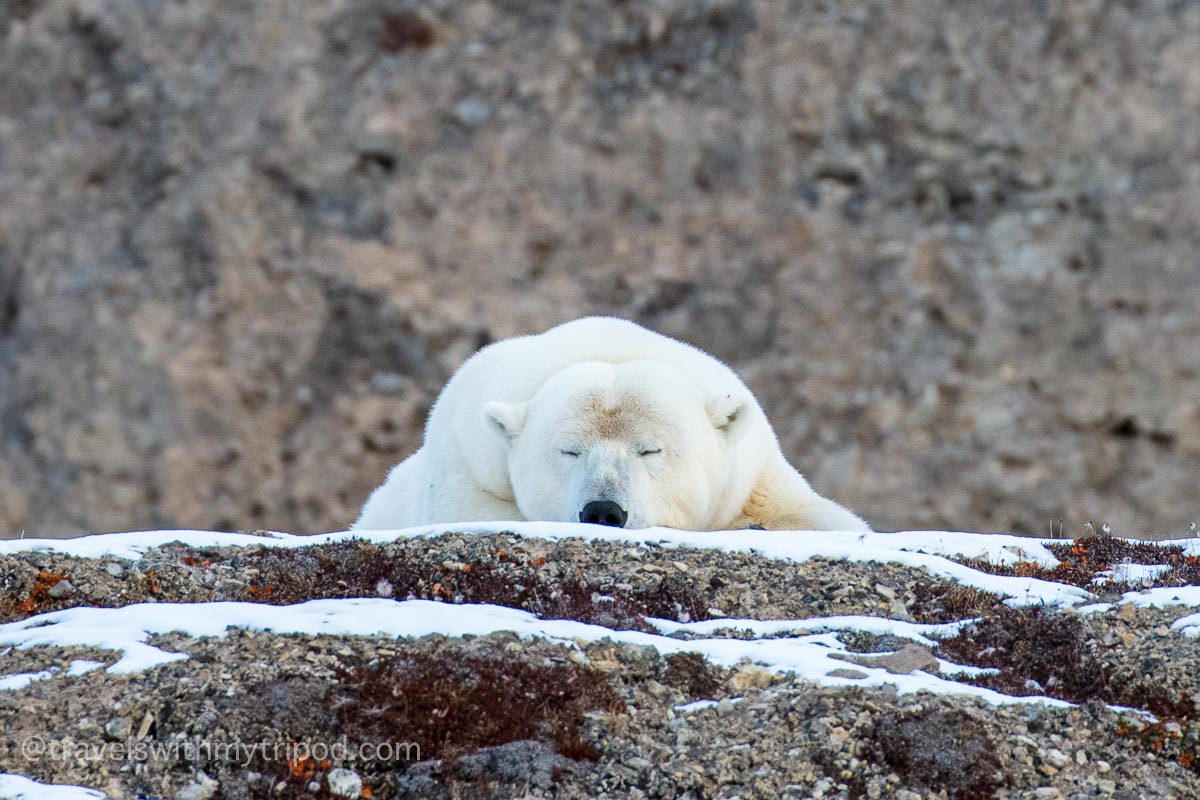
Death provides life
Before I knew it, it was time to head back to the ship and enjoy my first breakfast afloat. Not long afterwards though, we were back out on the sea to see what else we could discover.
As we approached the shore we discovered a decomposing whale carcass, which was being picked at by some hungry gulls. This presumably had also provided a meal for the female bear, who was now sleeping it off.
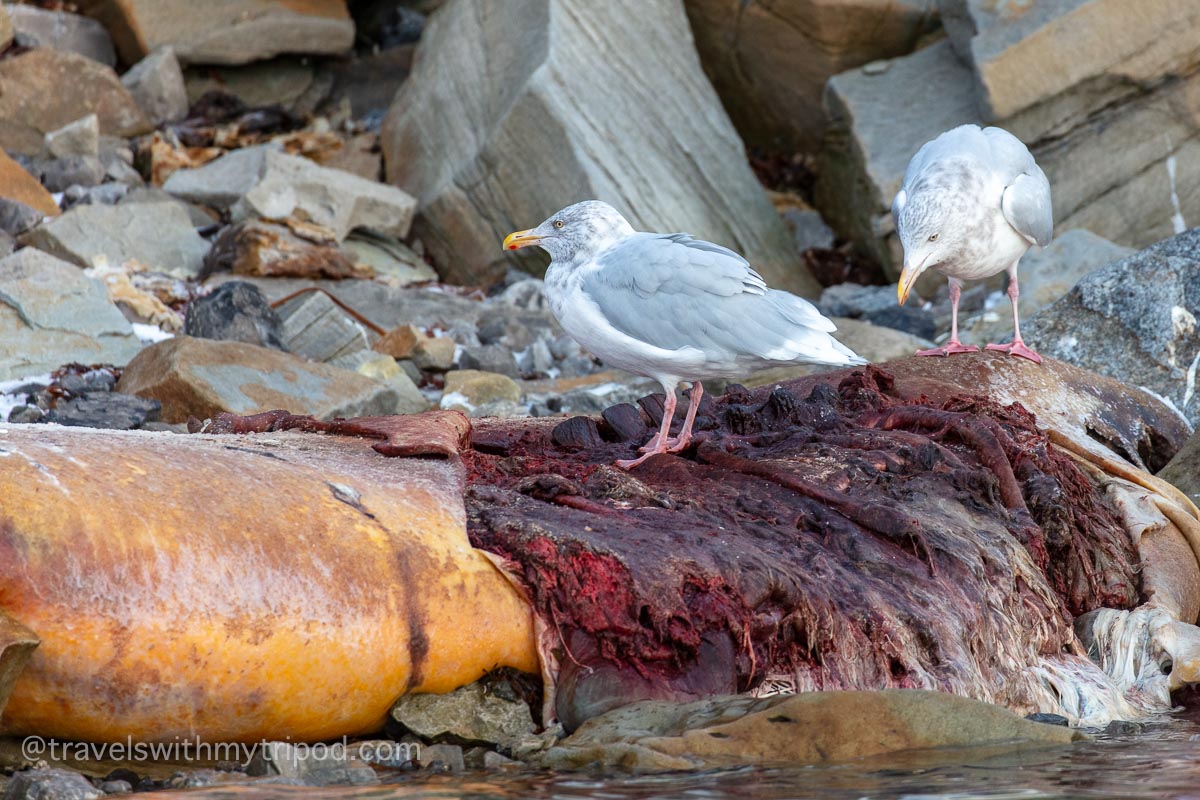
We floated by the whale carcass, the death of this giant of the ocean now giving life to others. Fortunately we weren’t close enough to find out what a decaying whale smells like, but I’m pretty sure it wasn’t great.
At this point, the bear poked her head over the cliff edge and peered down at us. After a brief look at these curious interlopers into her world, she rested her head on her large paws and dozed off again.
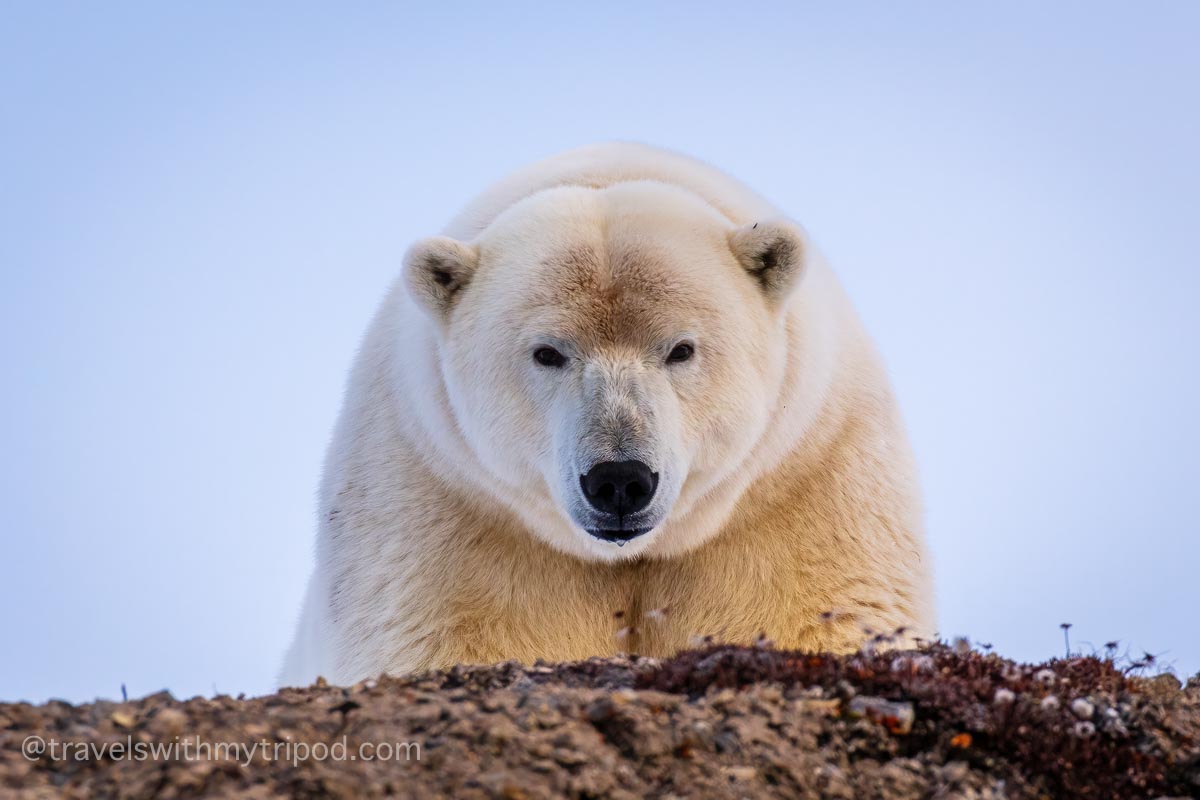
This was our cue to head back to the ship, and we set sail for the next location.
Reindeer at Alkhornet mountain
After a few hours sailing, it was time for another excursion to shore. In the distance, an imposing mountain called Alkhornet dominated the landscape, located at the inlet to Trygghamna bay. In the summer, its steep rocky cliffs provide a home to many thousands of birds, however by now they had all migrated south for warmer climes.
At the base, the wide tundra provides a lush feeding ground for herds of reindeer, thanks to the natural fertiliser produced by the nesting birds.
Upon landing, we climbed up a rocky ravine and made our way over the tundra which was blanketed in a covering of fresh snow. The crisp, frozen blanket crunching under our boots as we made footprints in it. In the distance was a small herd of reindeer grazing, trying to find nourishment under the snow. As the sun began to set on an amazing day, I watched a couple of young stags playfully tussle in the distance.
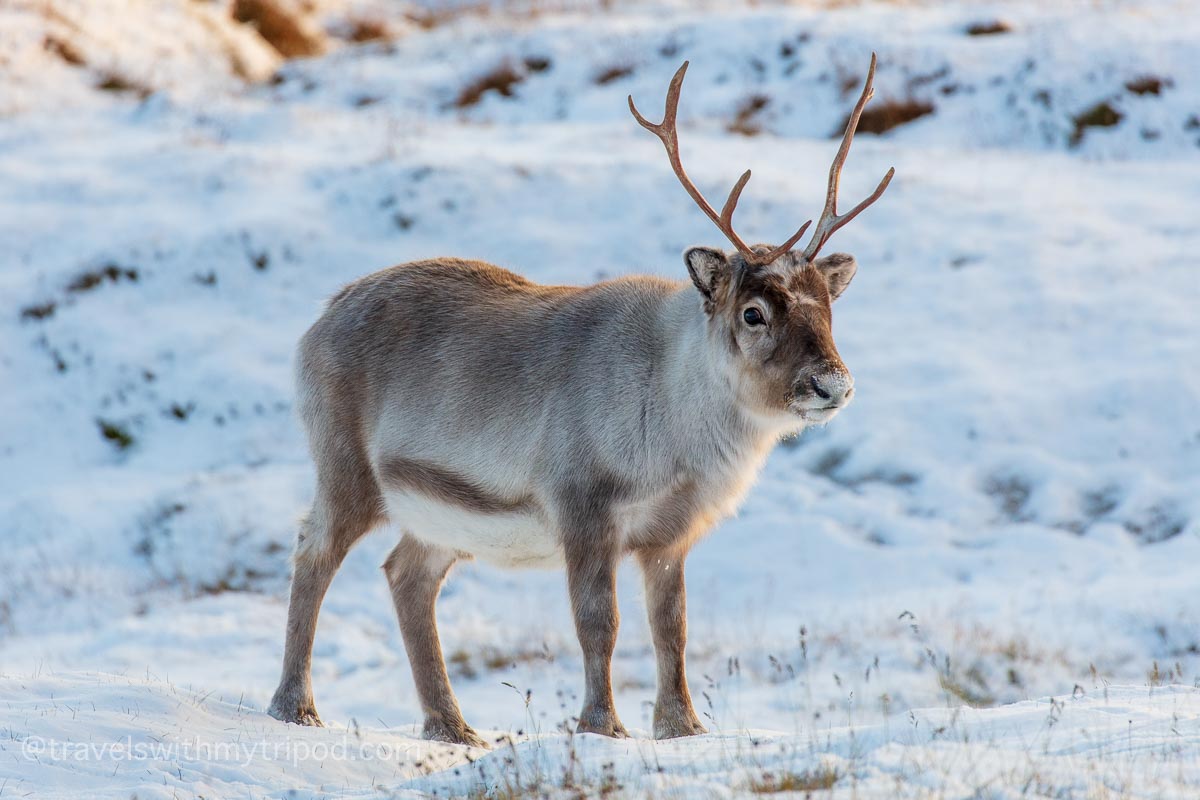
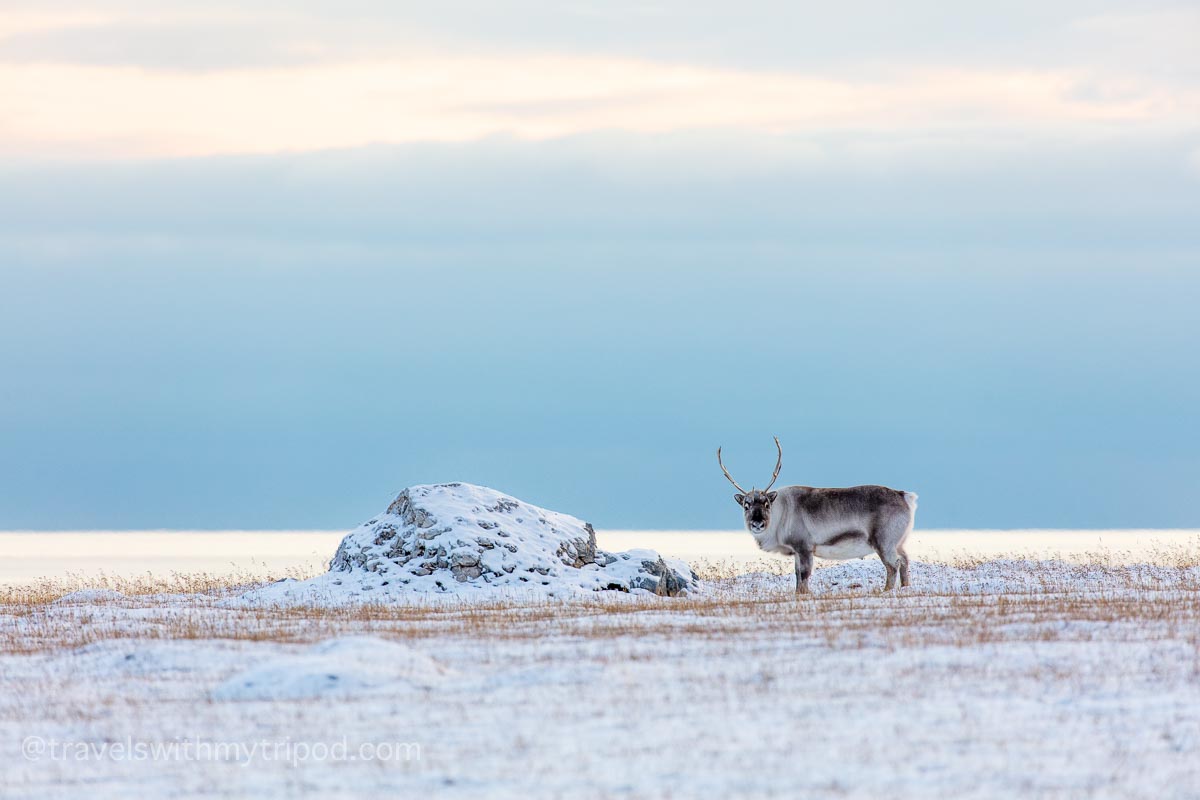
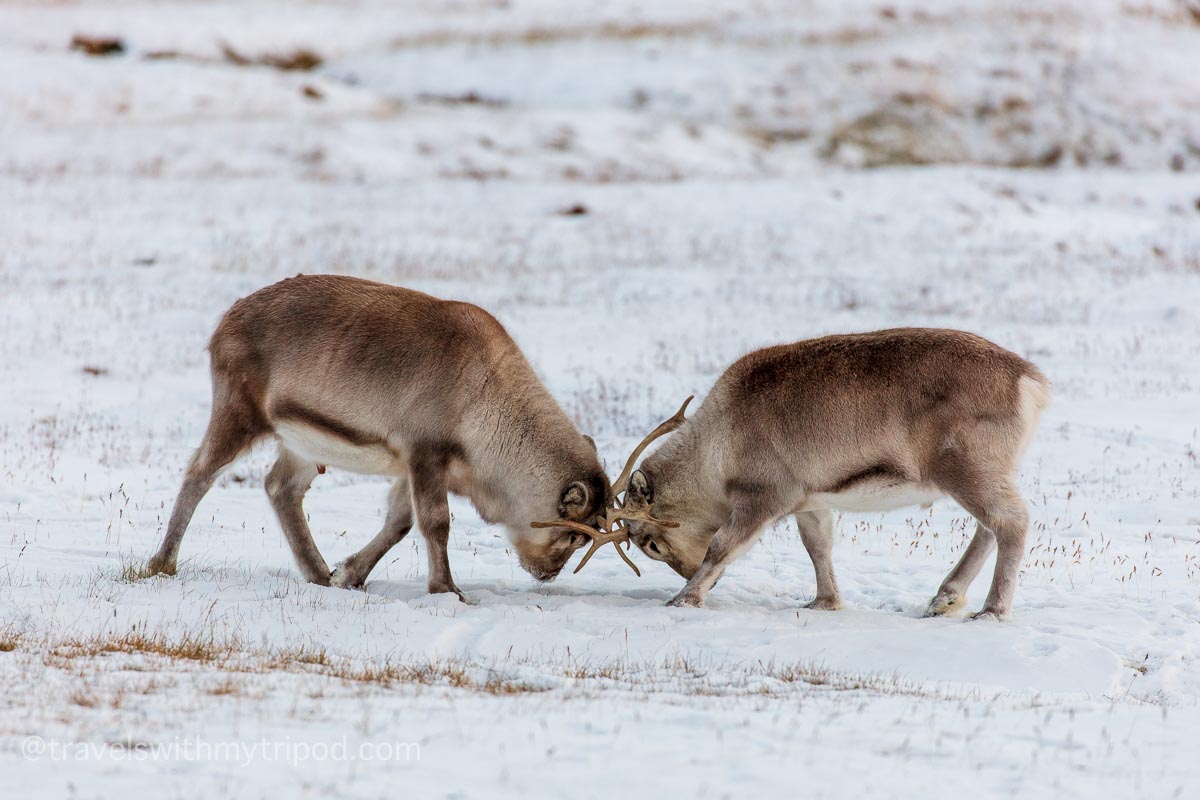
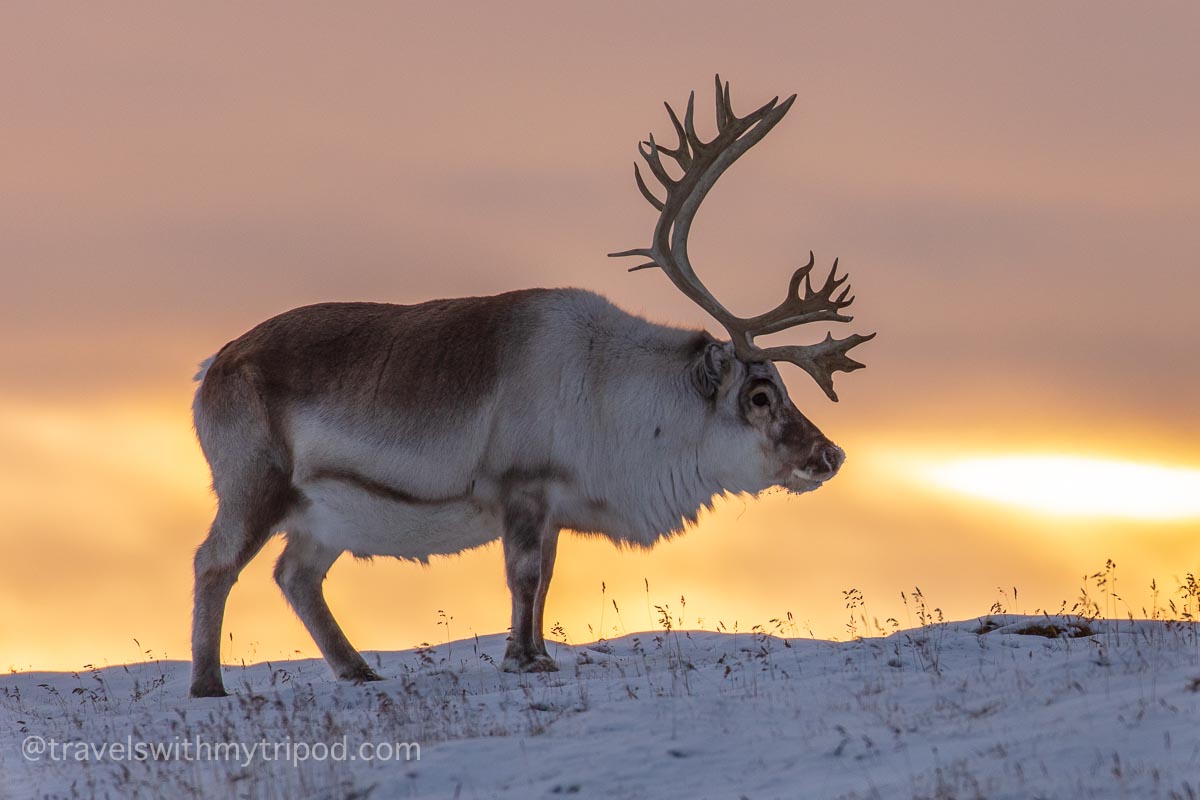
Walrus beach
Our next stop was near Smeerenburg, perched right on the northwest corner of Svalbard. This was a former settlement built by Dutch whalers back in 1617. It was from this area that Salomon August Andrée, Knut Frænkel and Nils Strindberg launched their ill-fated expedition to fly over the north pole in a balloon at the end of the 19th century. After crash-landing on the ice, they spent 3 months attempting to make their way home before succumbing to the conditions. Their remains were eventually discovered over 30 years later.
We ventured ashore again, and almost immediately one of our guides spotted a cute ball of fur. It was an arctic fox curled up in the snow, its white coat making it almost invisible against the arctic landscape. This was undoubtedly one of the cutest creatures I’ve ever seen!
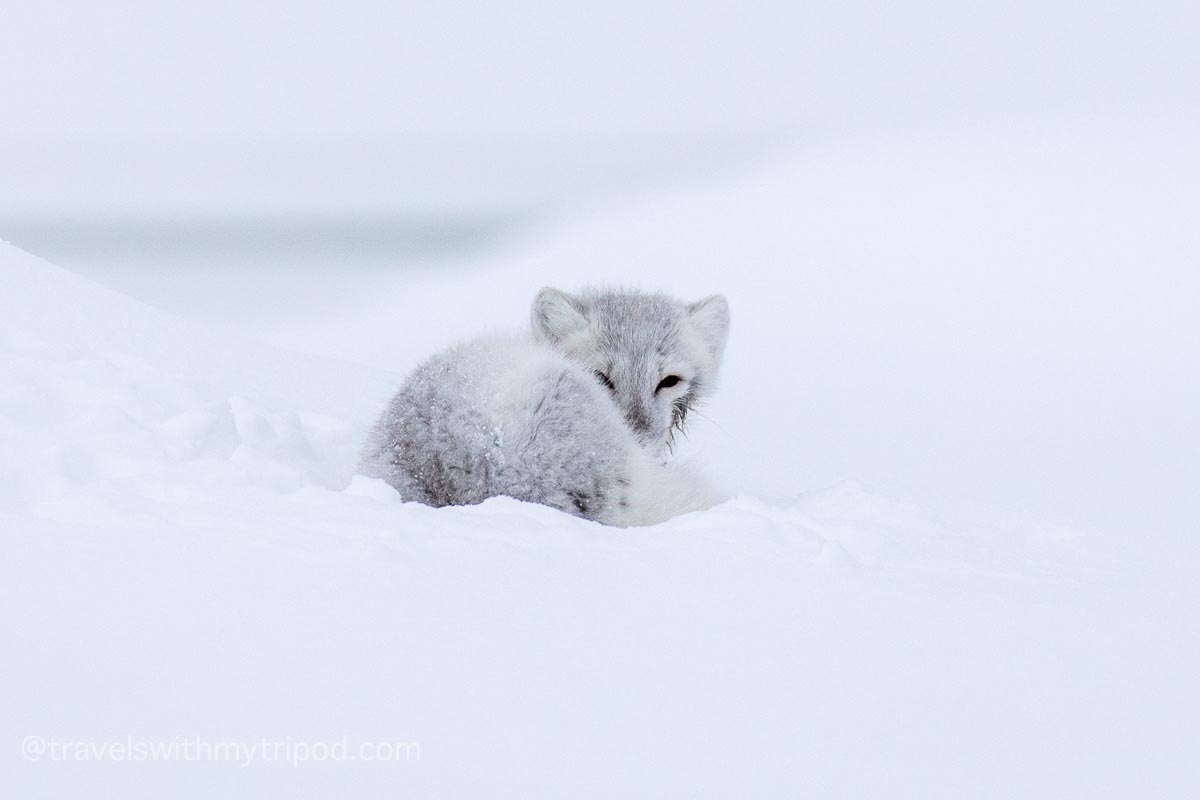
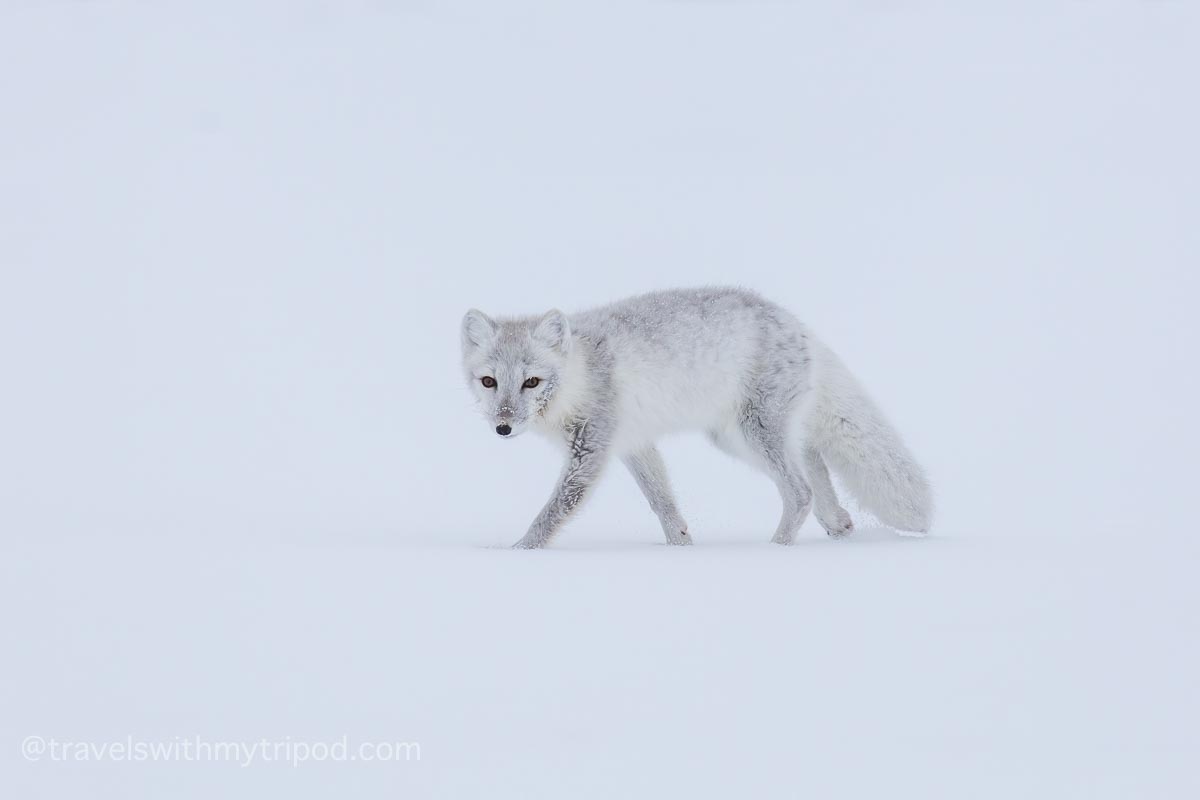
The fox slowly trotted off, past a group of walruses huddling together on the shore. This was another first too, I’d never seen an arctic fox or walrus before – this trip was getting better and better!
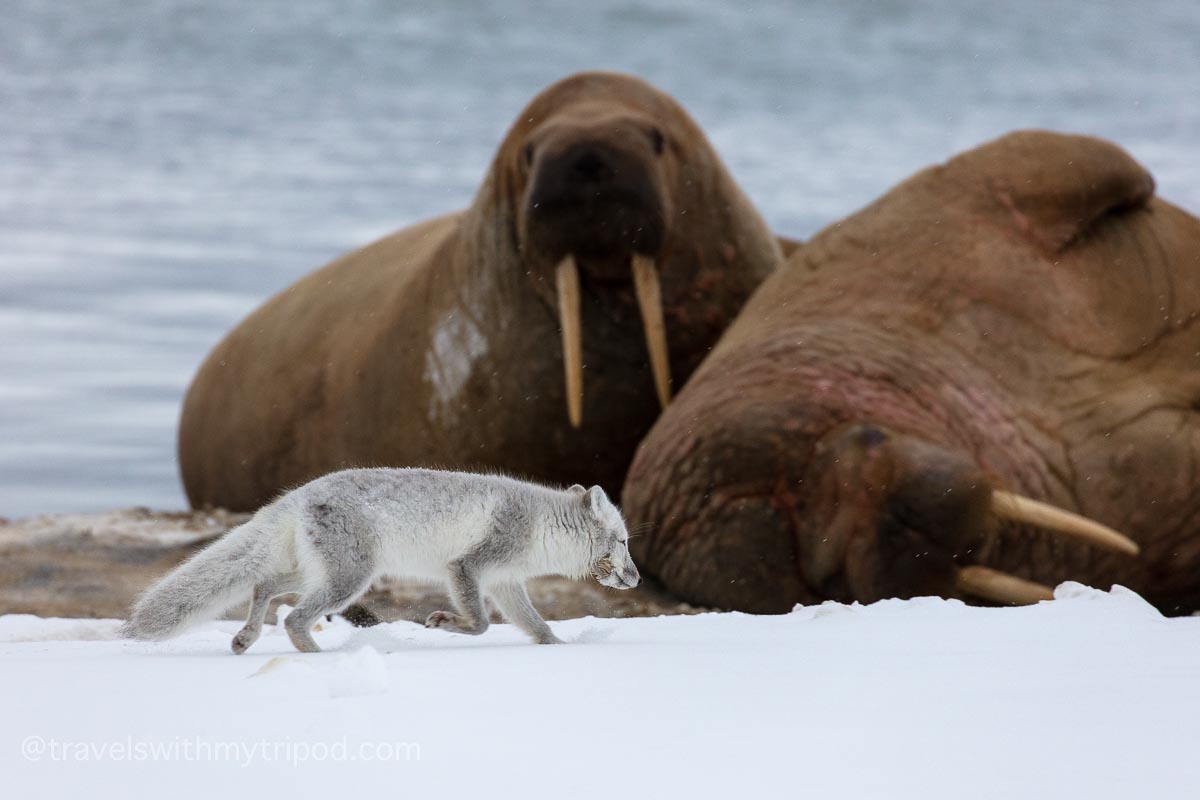
These two animals were polar opposites of each other. The fox was cute, nimble and fast, the walruses not so much. The walruses bickered between themselves as they tried to arrange themselves into a huddle for warmth. Some rested their long tusks on their neighbour’s body, grunting as they grumpily settled into position.
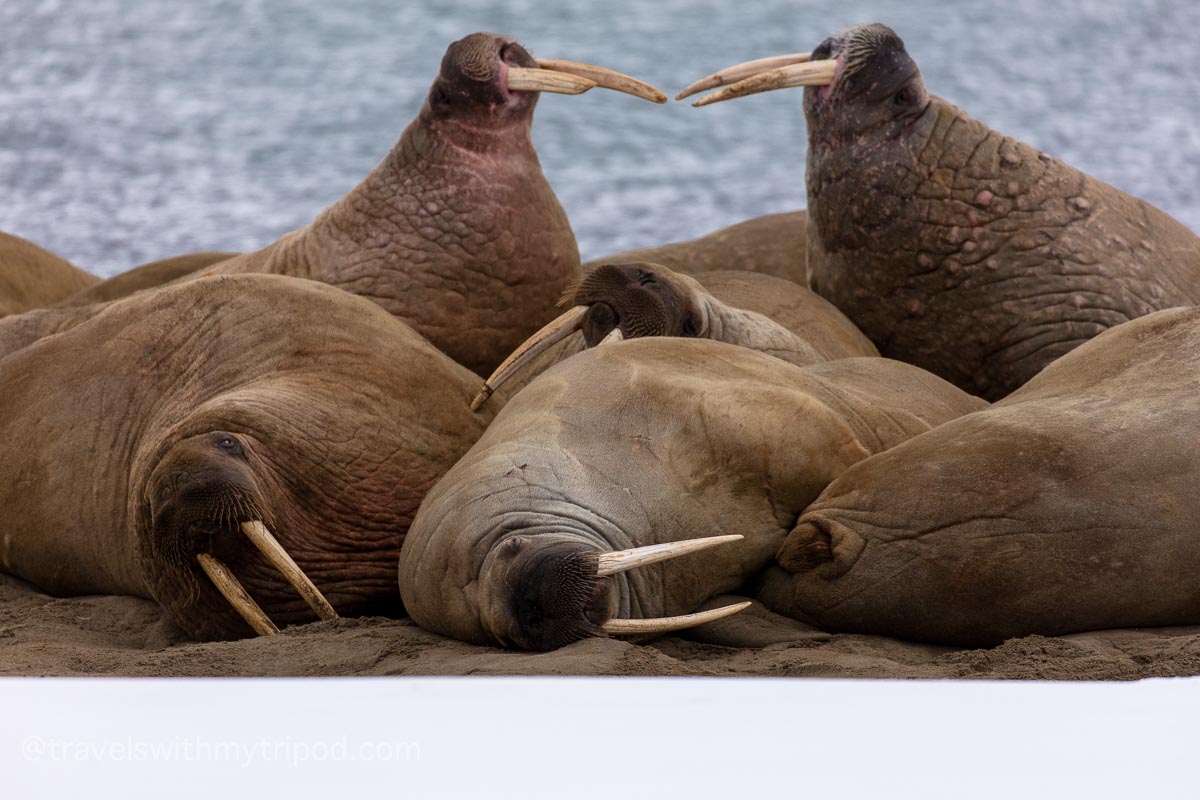
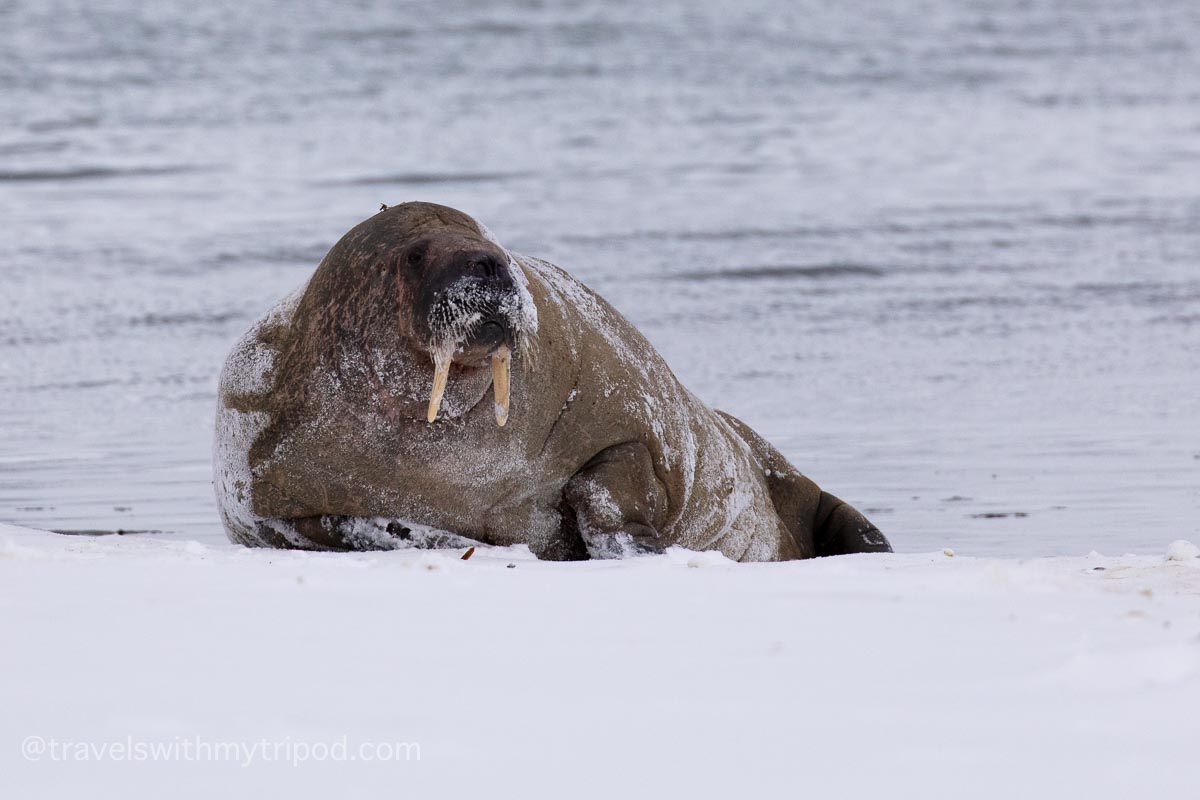
A few were in the sea and swimming gracefully – their huge mass only becoming a hindrance when they clumsily rolled themselves onto the shore.
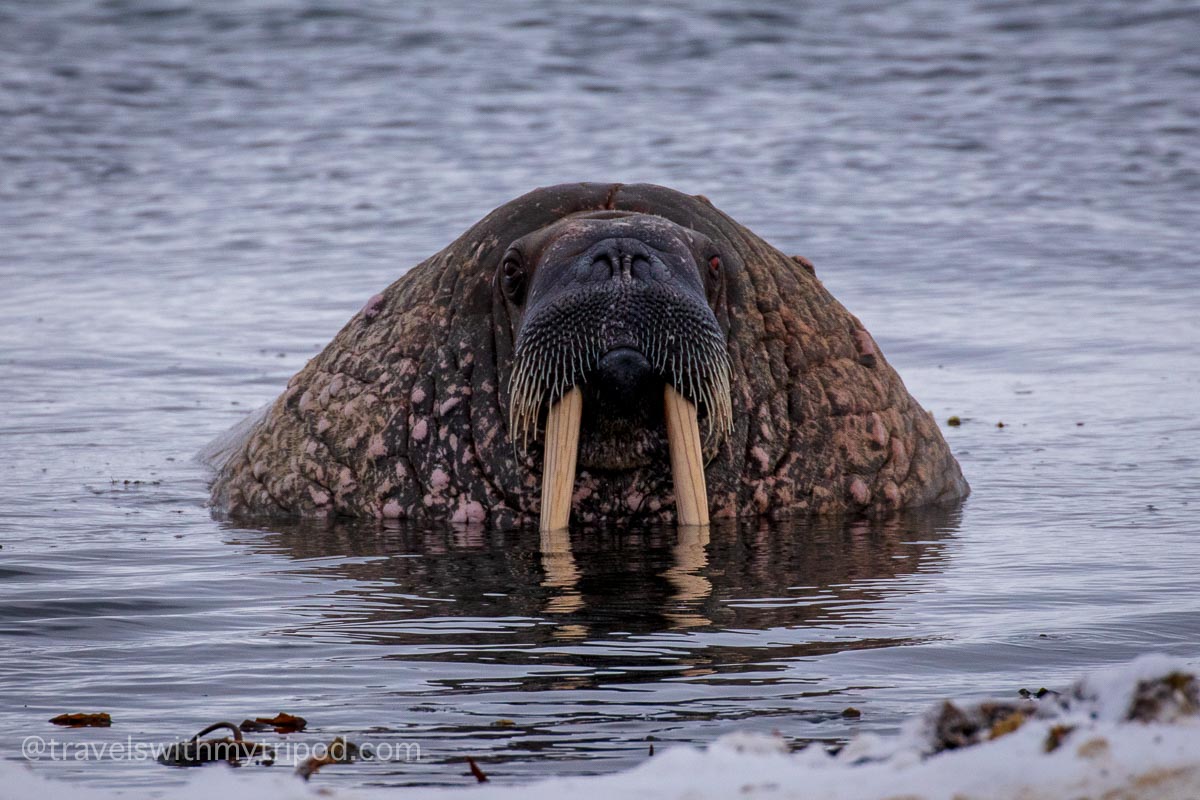
Hamilton Bay
Back on the ship, we rounded the north-west tip of Spitsbergen, and into Hamiltonbucta on the west side of Raudfjord.
We then donned our cumbersome romper suits to get back in the Zodiacs. Putting these on was pretty hard work, and a few yoga sessions before the trip would have been a great idea! Wearing this suit, I began to have some idea of how a walrus felt out of the water.
Slowly cruising around the bay, we dodged mini icebergs as we pushed through the slush. At one point we spotted a walrus resting on one of the larger icebergs. There were also a few seals in the water, along with some kittiwakes (a type of seagull) resting on the ice.
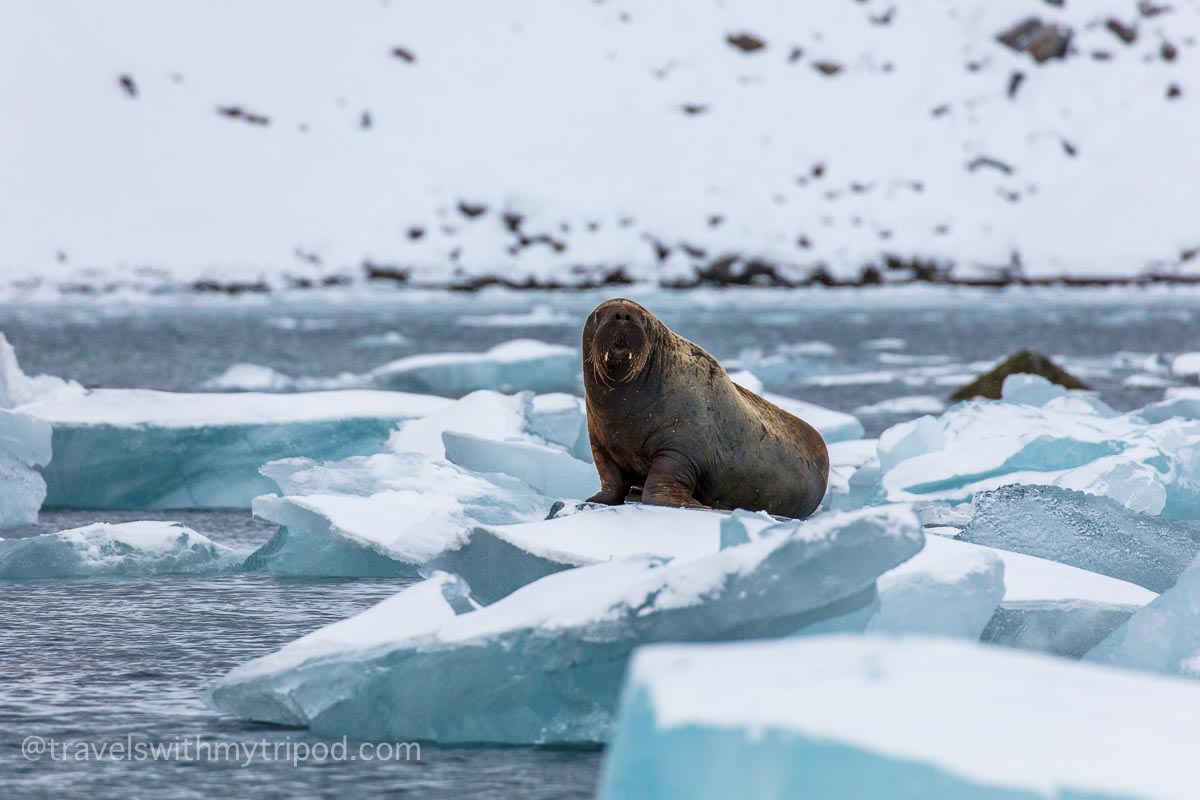
Being just a few inches from the water as we slowly motored through the ice really helped me feel an intimate connection to this frozen landscape. It was like being on a different world – everything was so different to what I’m used to. The air was crisp with the cold, and the ice gently creaked and popped as it melted.
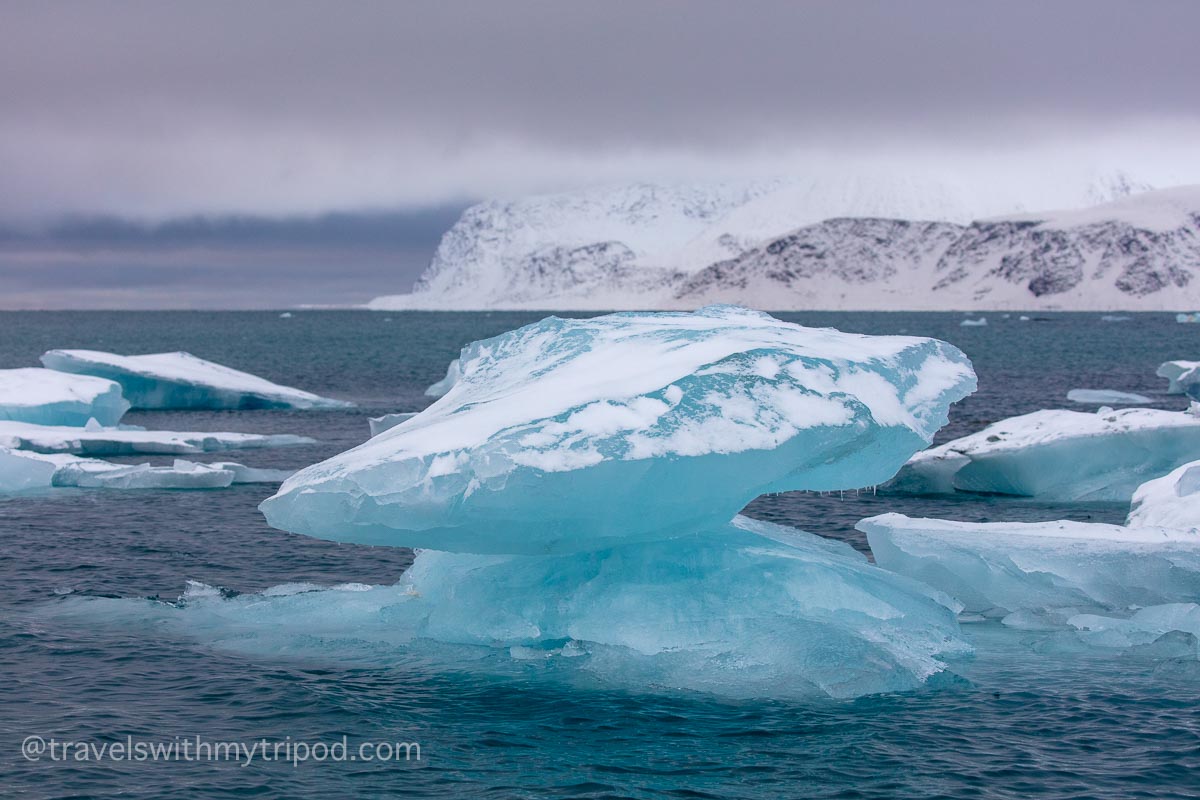
I could have continued drifting through this watery winter landscape for many hours, but eventually it was time to head back to the warmth of the ship.
80 degrees north
We sailed through the night, at some point passing over the 80-degree parallel. At this point we were just 600 or so miles from the North Pole, and what felt like a whole world away from civilisation.
It was a strange feeling knowing that we were probably the only humans within 50 miles, and quite sobering. I began to feel a connection to the explorers who had given everything to venture further than anyone had before, and I shared at least some of their spirit of exploration.
Our eventual destination was the southwest coastline of Nordaustlandet, where we would encounter one of the most awe-inspiring sights I’ve ever seen. This was Bråsvellbreen – a towering wall of ice over 20 metres high, and stretching as far as the eye could see. This 180km long glacier is part of the Austfonna ice cap and is the longest glacier front in the northern hemisphere.
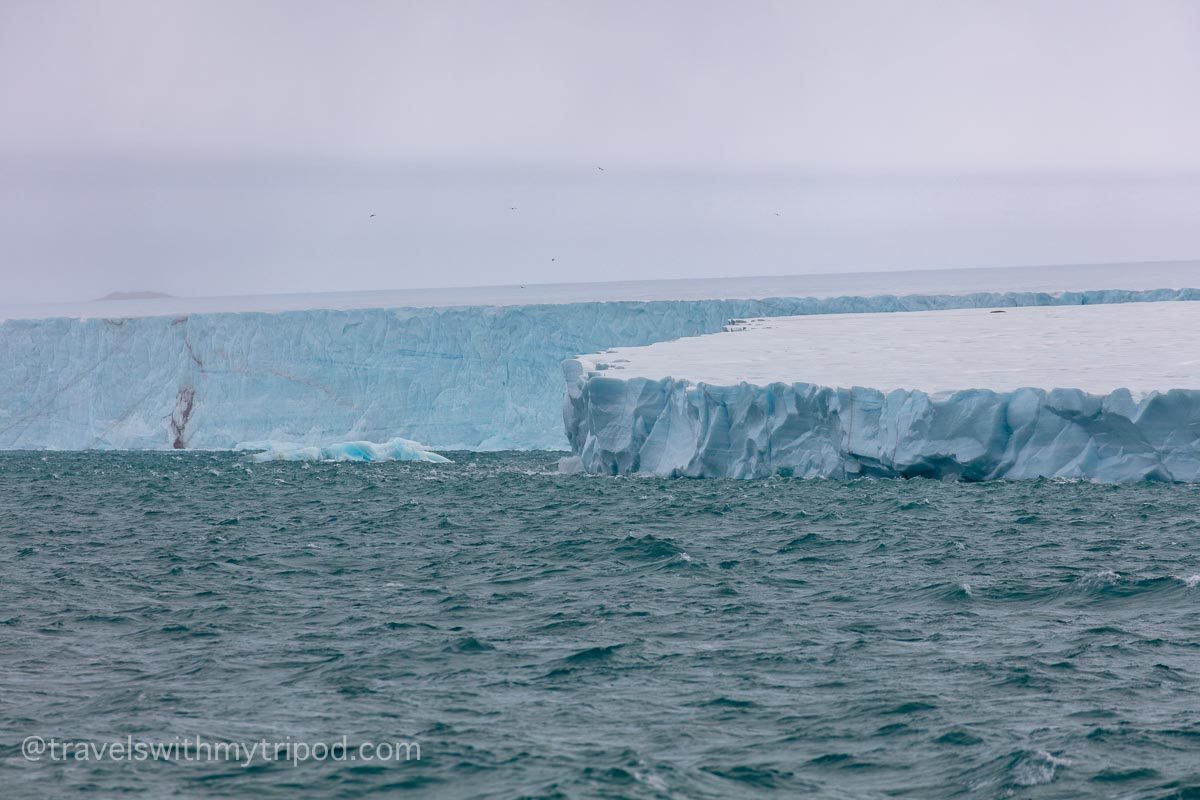
As we sailed along this endless wall of ice, large icebergs would float by, their jagged shapes reflecting the warmth of the afternoon light as the sun set.
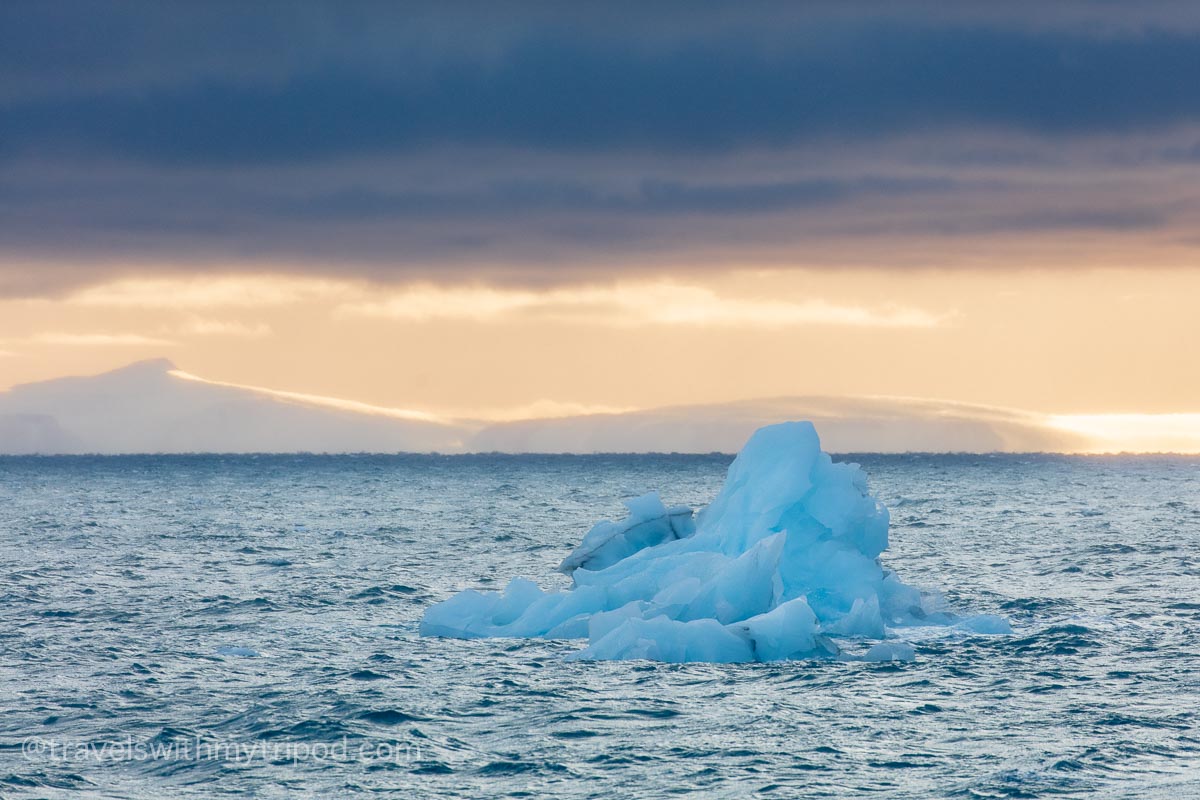
Another polar bear sighting
Our next destination was Murchisonfjorden, a small fjord on the western side of Nordaustland. It would prove to be the highlight of many highlights of the trip for me.
We ventured out in the Zodiacs early the next morning to explore the bay, and after just a few minutes someone mentioned that they had spotted a polar bear on the shore. We watched this young male – maybe 2 ½ years old – wander along the rugged shoreline, over rocks and through the snow. He didn’t seem to have a care in the world, although was a little tentative trying to cross the fresh ice which didn’t quite hold his weight.
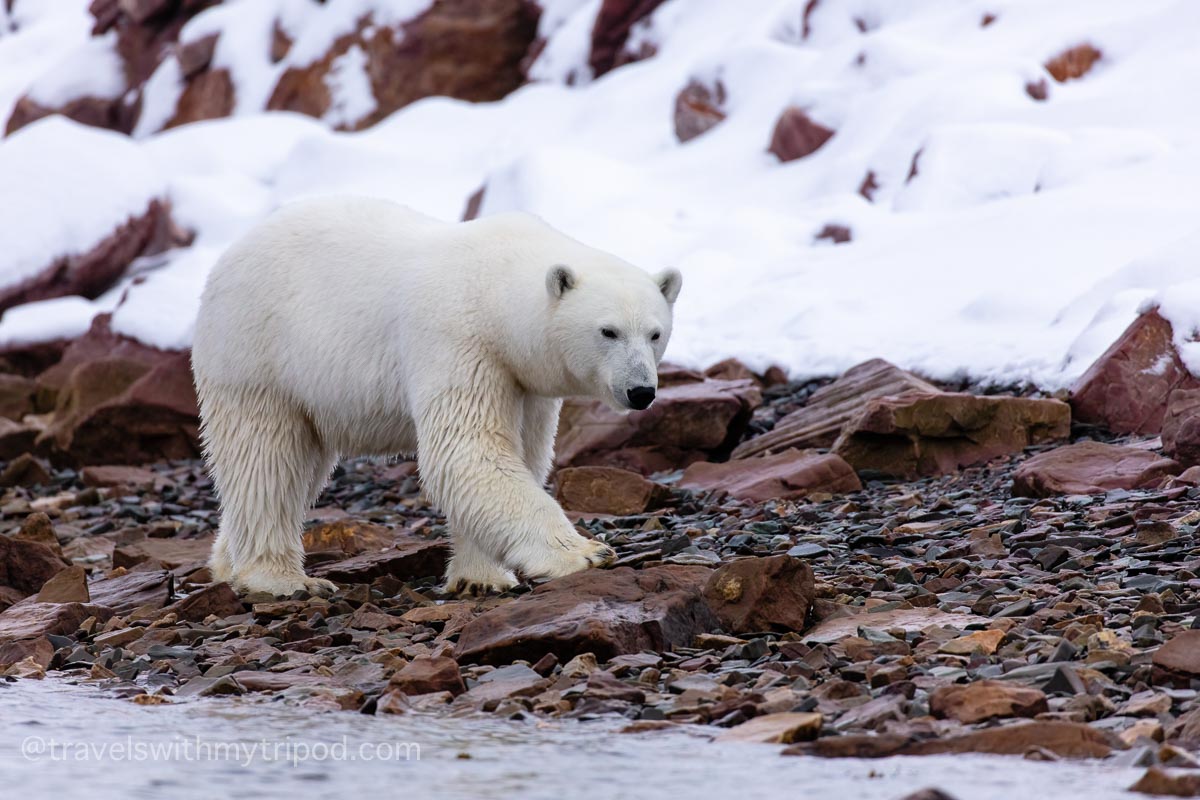
We sat and watched him from a distance for over an hour, and it was one of the most incredible experiences of my life. My heart was pounding with excitement as I viewed this magnificent animal through my telephoto lens, taking photo after photo.
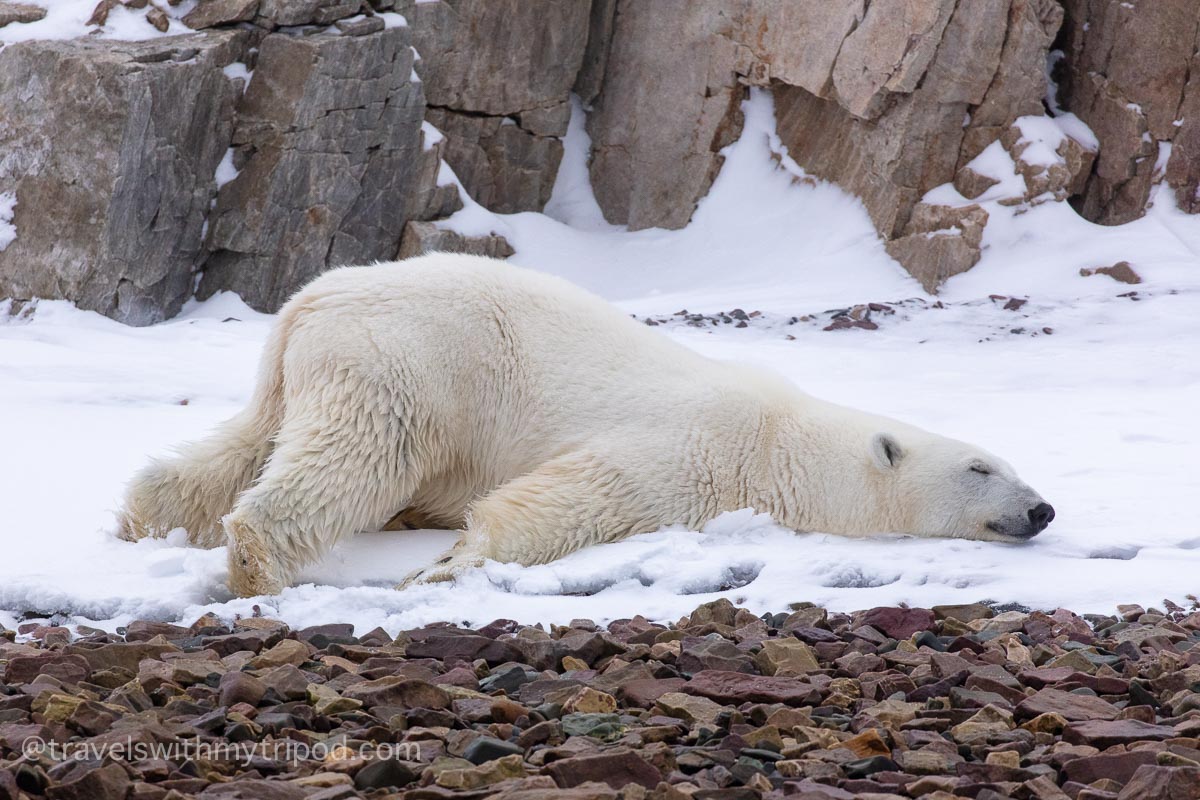
At times I had to put my camera down to ensure I experienced this once-in-a-lifetime moment through my own eyes. This really was a privilege that not many will experience, and I wanted to savour every moment.
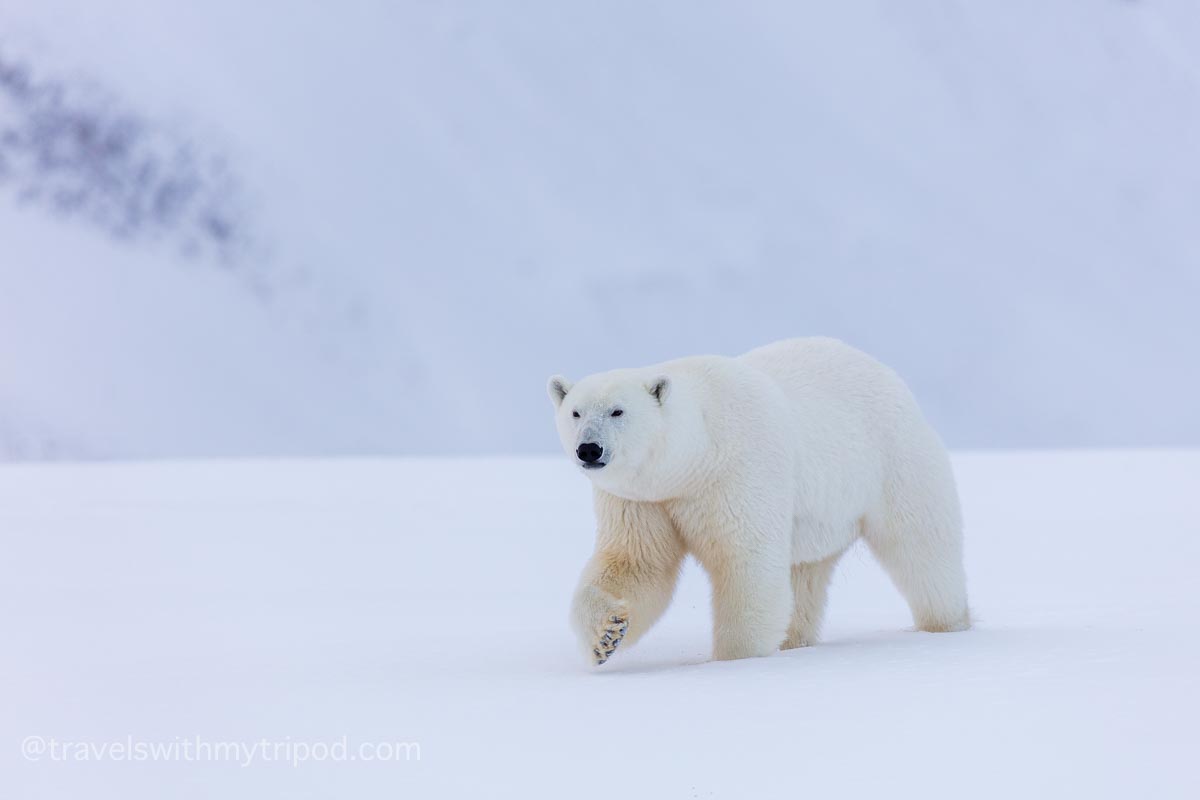
I ignored the cold seeping through my gloves into my fingers, and continued photographing the bear as he wandered. I was fully aware I was a visitor to his world, and marvelled at how at ease he was in such harsh conditions.
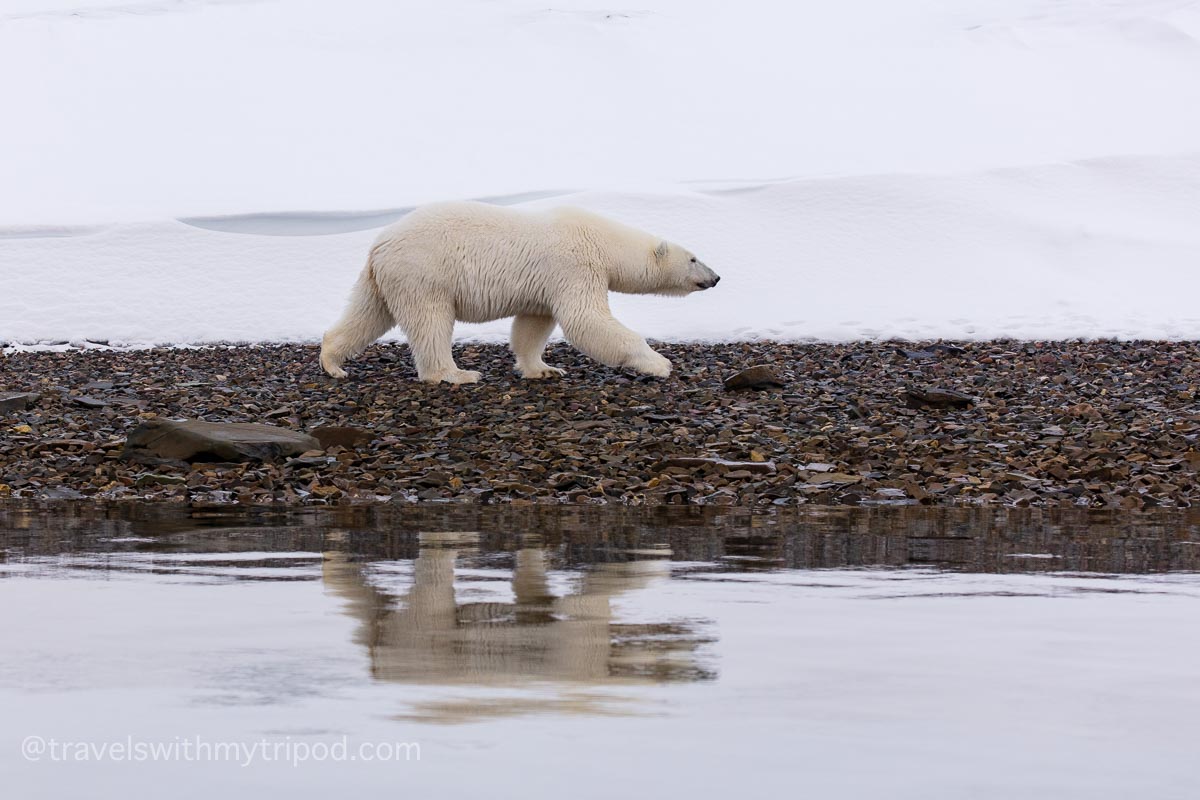
During this amazing encounter, we also spotted a rare blue artic fox carrying a fish they had managed to catch. They were clearly aware of the nearby bear, and we were all willing the fox to escape with their meal.
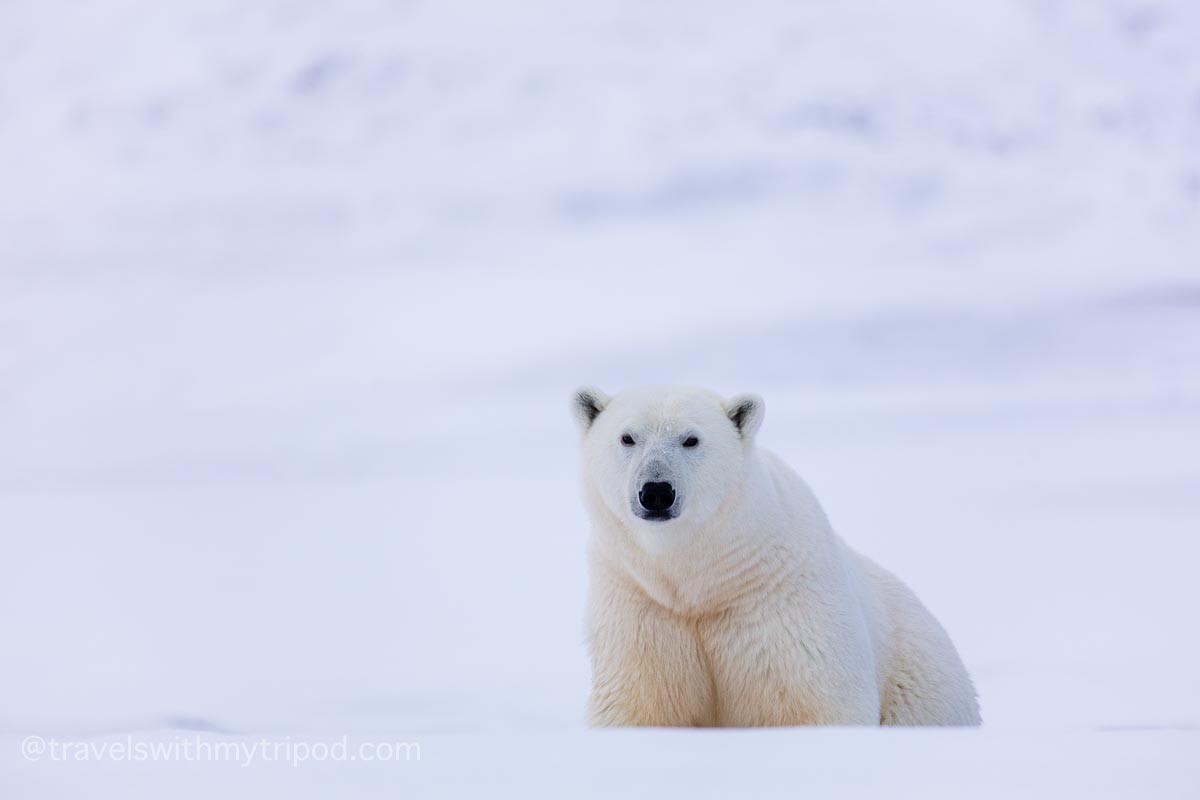
Eventually though the bear headed back inland, and we returned back to the ship, buzzing with excitement at this incredible experience.
Kinnvika Research Station
After lunch, still not quite believing what we’d seen that morning, we ventured out for our next excursion. The destination was a place called Kinnvika.
This was a Finnish-Swedish research station consisting of around 10 wooden buildings and some old machinery. It was built at the end of the 1950’s, and although appearing to have been abandoned for many years, it has been used as recently as 2008.
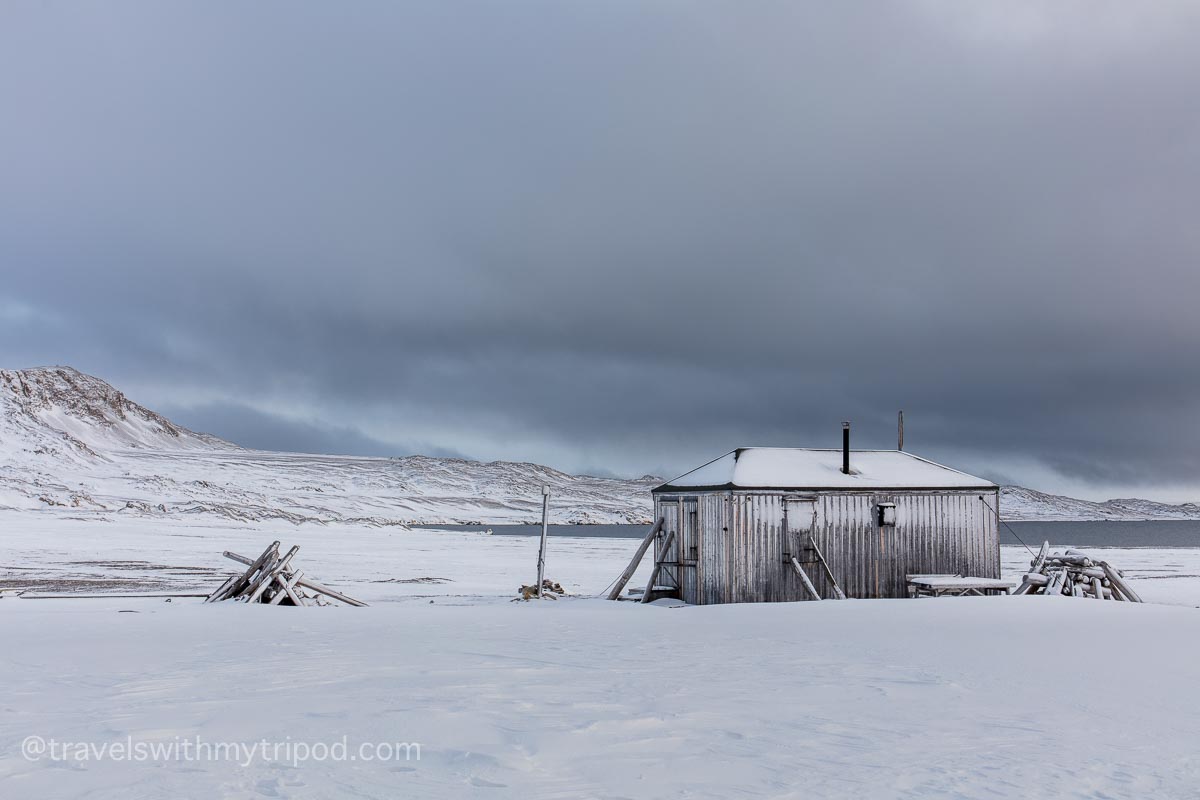
The old wooden buildings made wonderful subjects to photograph, and we were also able to look inside one. It was very basic and utilitarian, and the thought of spending a night here, let alone the whole winter, was really not appealing.
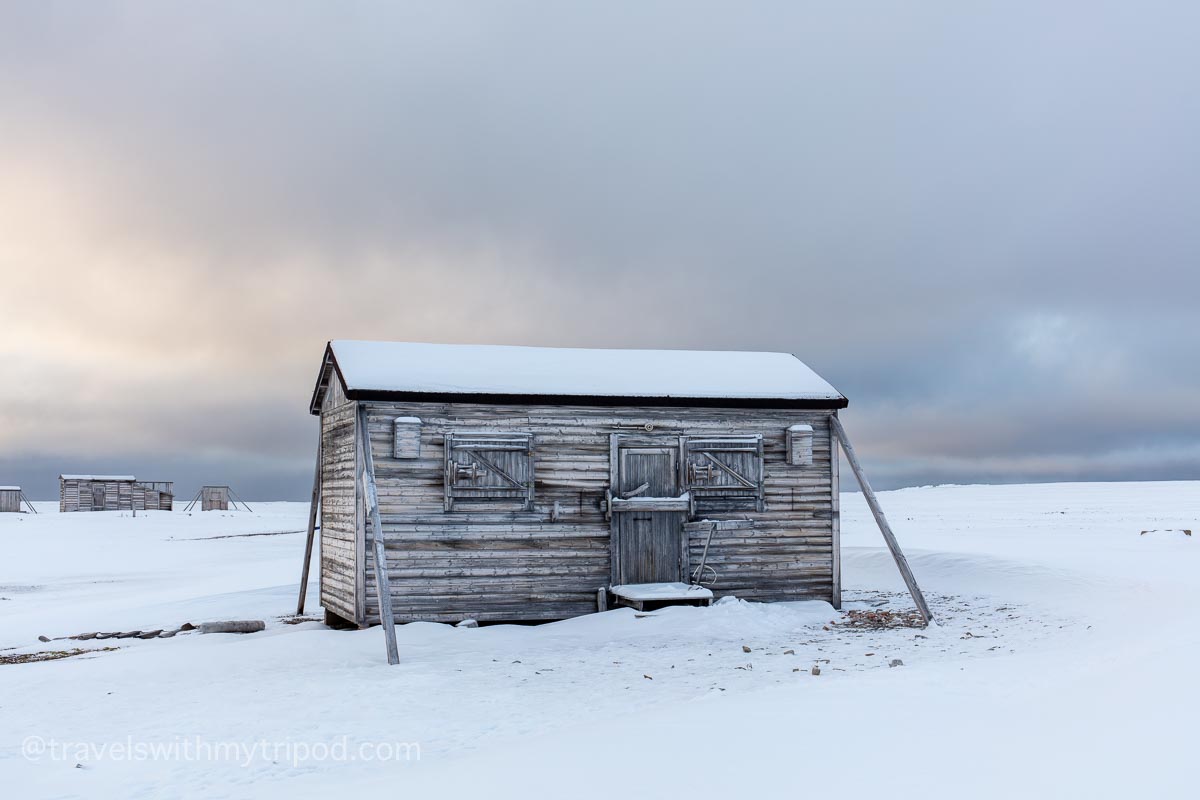
While exploring the buildings, I spotted some recent bear prints in the snow. It was slightly disconcerting to think there might be one nearby, and also highlighted the challenges and risks that the explorers and researchers faced while living here.
Glacier calving
Having sailed through the night again, we found ourselves back on the west coast of Spitsbergen. There was some ice forming on the sea now, which the ship easily pushed through. The bow carved through the thin ice sending small frozen fragments skating over the larger chunks. We were now in Krossfjorden.
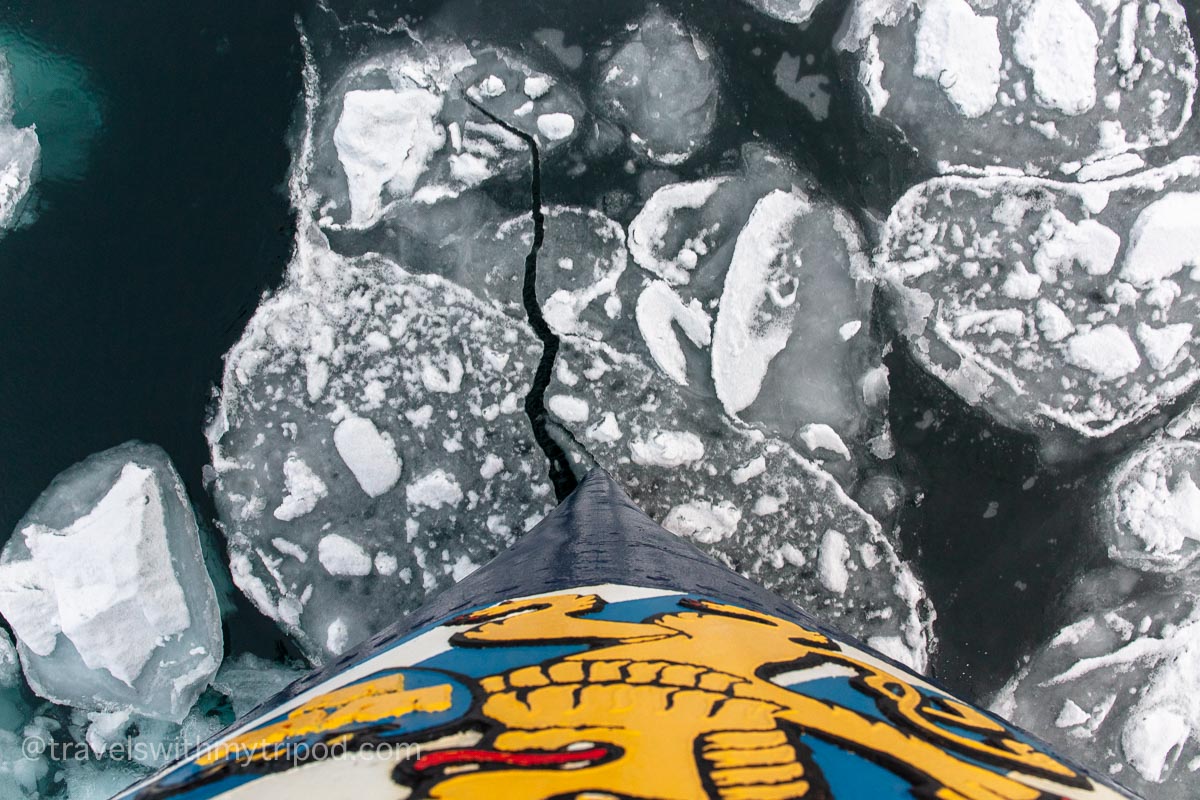
We went out in the Zodiacs again, by now the struggle to fasten the life jacket buckle becoming slightly easier with practice. As we walked ashore, it reminded me of Diamond Beach in Jökulsárlón, Iceland as there were countless icebergs on the beach, or floating close by. These had all come from the nearby glacier which was actively calving as we were there.
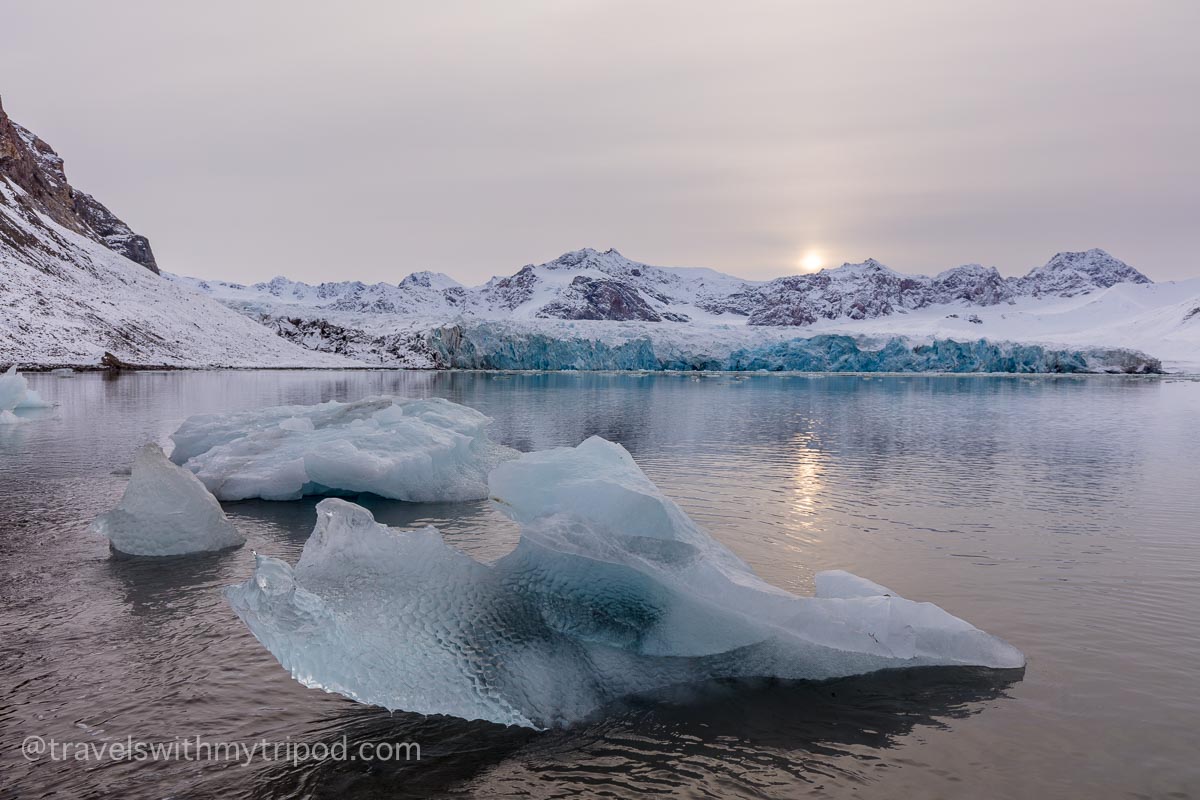
Calving is the process where chunks of ice break from the edge of a glacier. This is an impressive sight to witness, but can be rather dangerous too. Not only is there a risk of being hit by fragments of ice if you get too close, but it also causes large waves that can swamp the beach or capsize small boats.
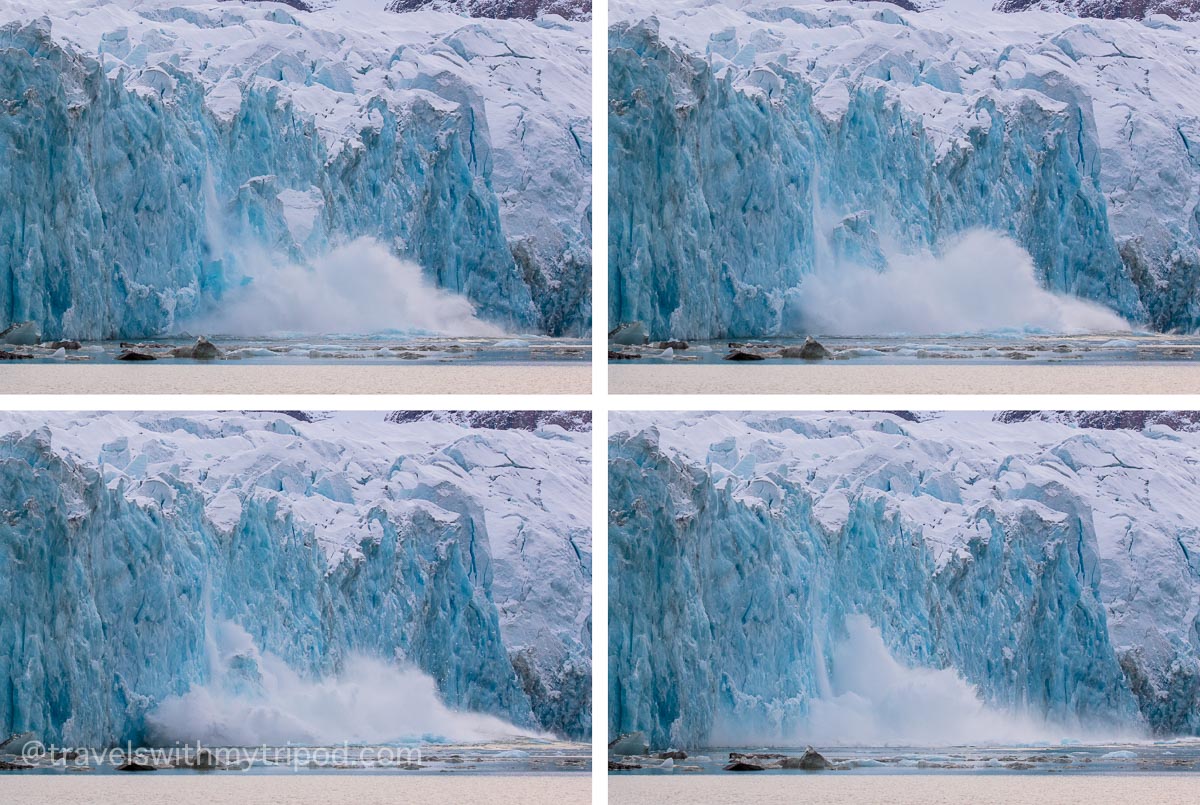
It was an awe-inspiring sight watching these large chunks collapse, knowing that even a small block just one metre cubed weighs the same as a small car.
After a gentle cruise through the fjord, getting as close to the glacier as was safe, we returned to the ship. We then sailed towards the small settlement of Ny-Ålesund where we moored up on the small dock for the night.
A night at Ny-Ålesund
Ny-Ålesund is a very small town on the shore of Kongsfjorden, and is in fact the world’s northernmost civilian settlement. It’s now used as a research base by a number of nations. During the summer around 2-300 people live here, but winter draws in most people head back home, leaving just 20-30 inhabitants.
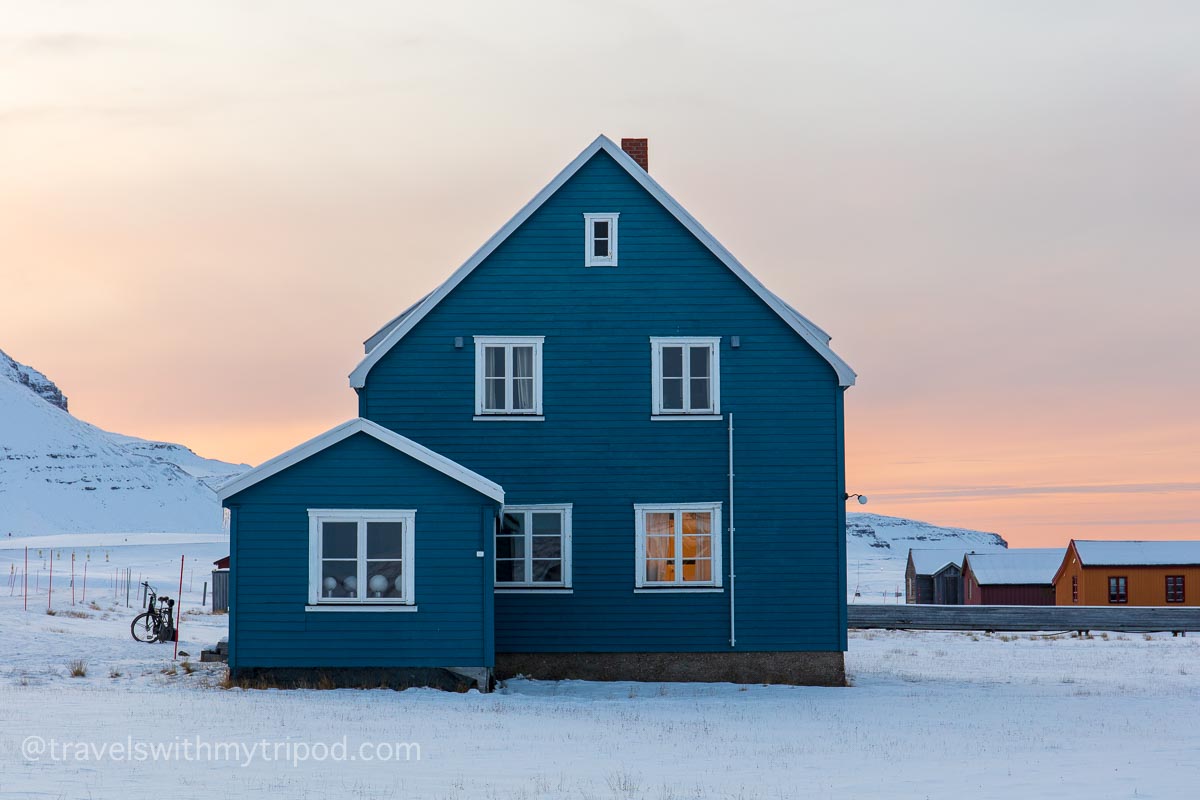
Like a number of settlements in Svalbard, it was originally founded by a mining company. And like almost all the other mining settlements in Svalbard, it proved unprofitable. The mine was finally shut down in the early 1960s, but a few years later saw the first research station built in 1967. Another interesting fact about Ny-Ålesund is that it has the northernmost shop and post office in the world.
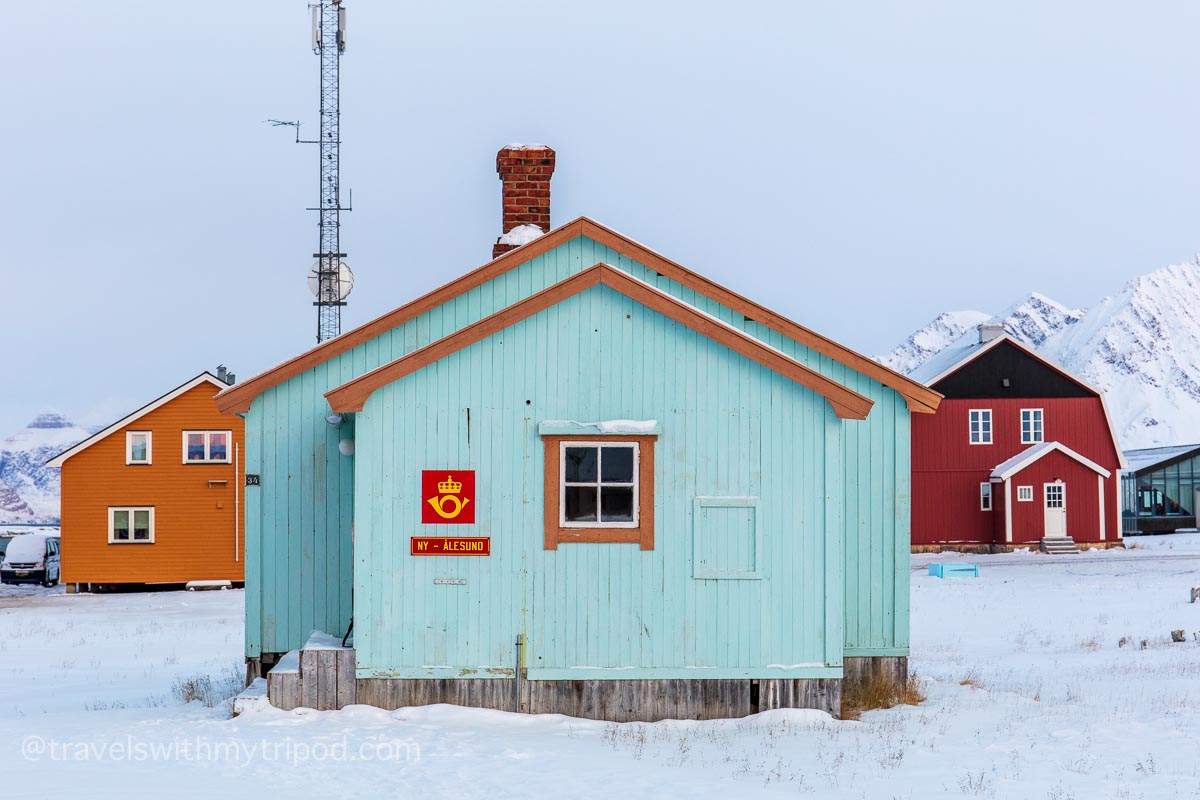
Ny-Ålesund is also famous for being the departure point for polar expeditions nearly 100 years ago. It was chosen by famous polar explorer Roald Amundsen as the base for his attempts to reach the North Pole by airship. Even around 100 years later, there are still signs of this endeavour, as one of the mooring masts for his airship still exists.
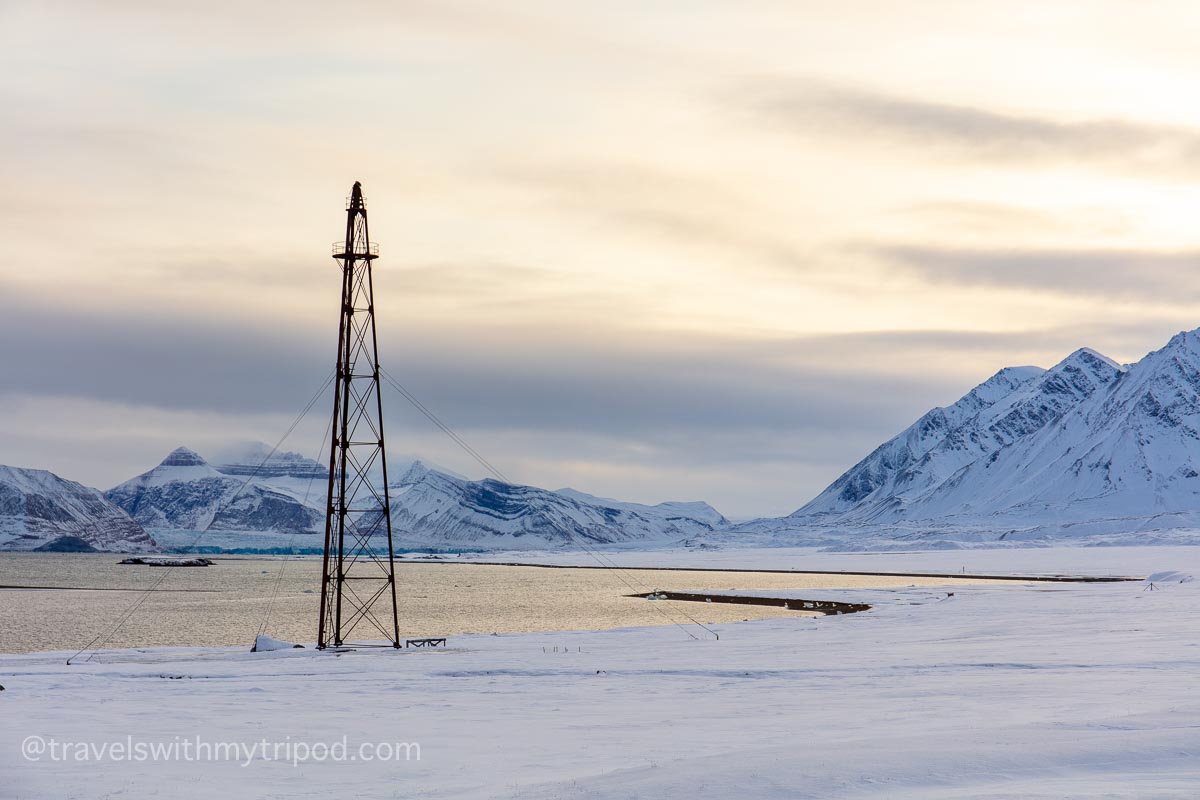
I stood close to the base of the tower, and tried to imagine this huge airship moored next to it – this flying behemoth standing out like an alien creature in this unforgiving land.
A Londoner in Ny London
Our next stop was just over the other side of the fjord, at an old marble mining operation called Ny London (New London). It was established by Englishman Ernest Mansfield in 1911 after he discovered marble on the island a few years previously. Like most operations in Svalbard, this one failed after it was discovered the marble disintegrated once it reached warmer climates so was worthless.
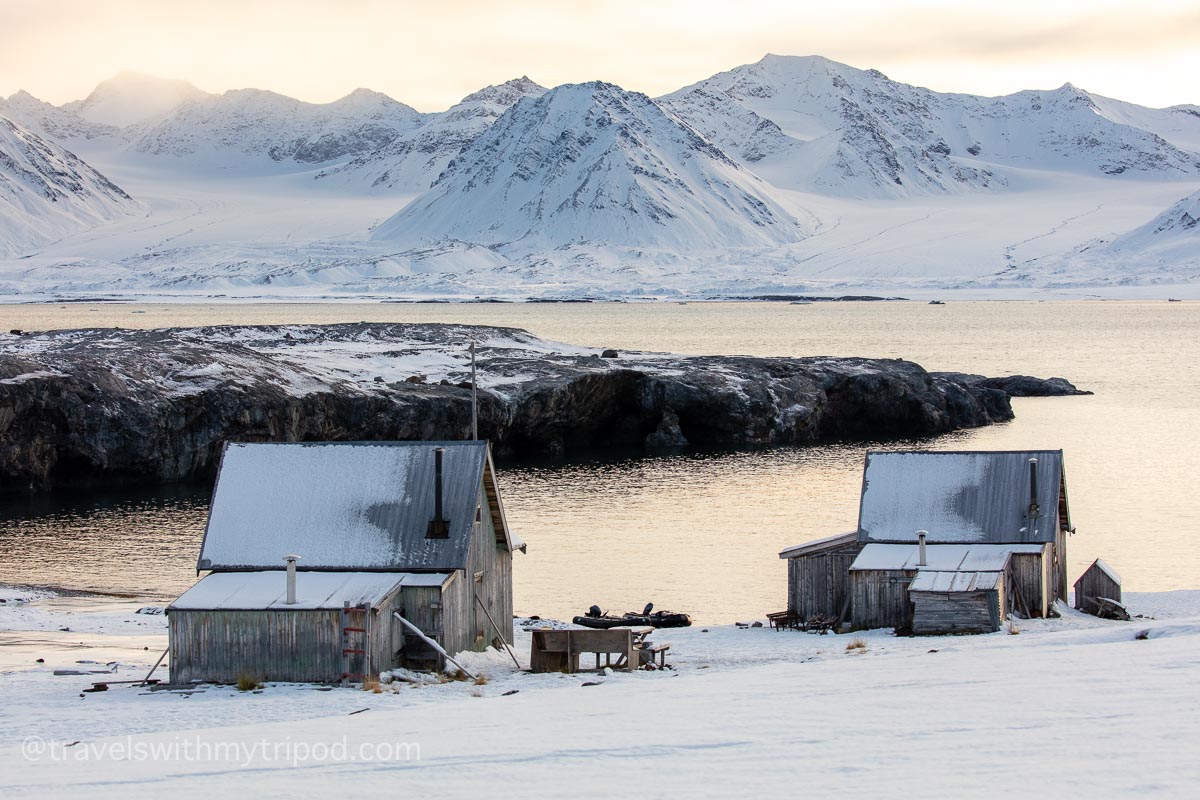
Despite being over 100 years old, there are still a couple of the original buildings standing there, and these proved to be very photogenic. Also standing out against the pure, white landscape were some rusting brown relics from over 100 years ago.
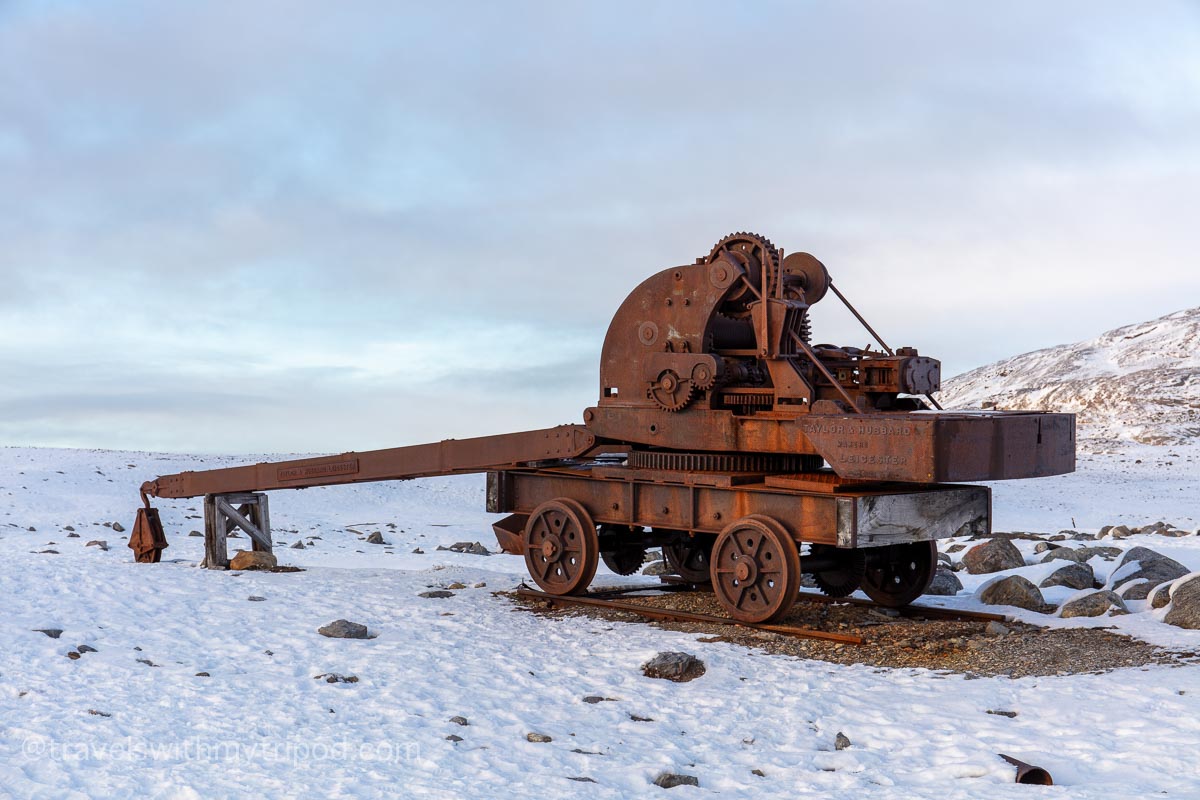
The landscape too was stunning – small drifts of snow on the wide-open tundra forming interesting patterns.
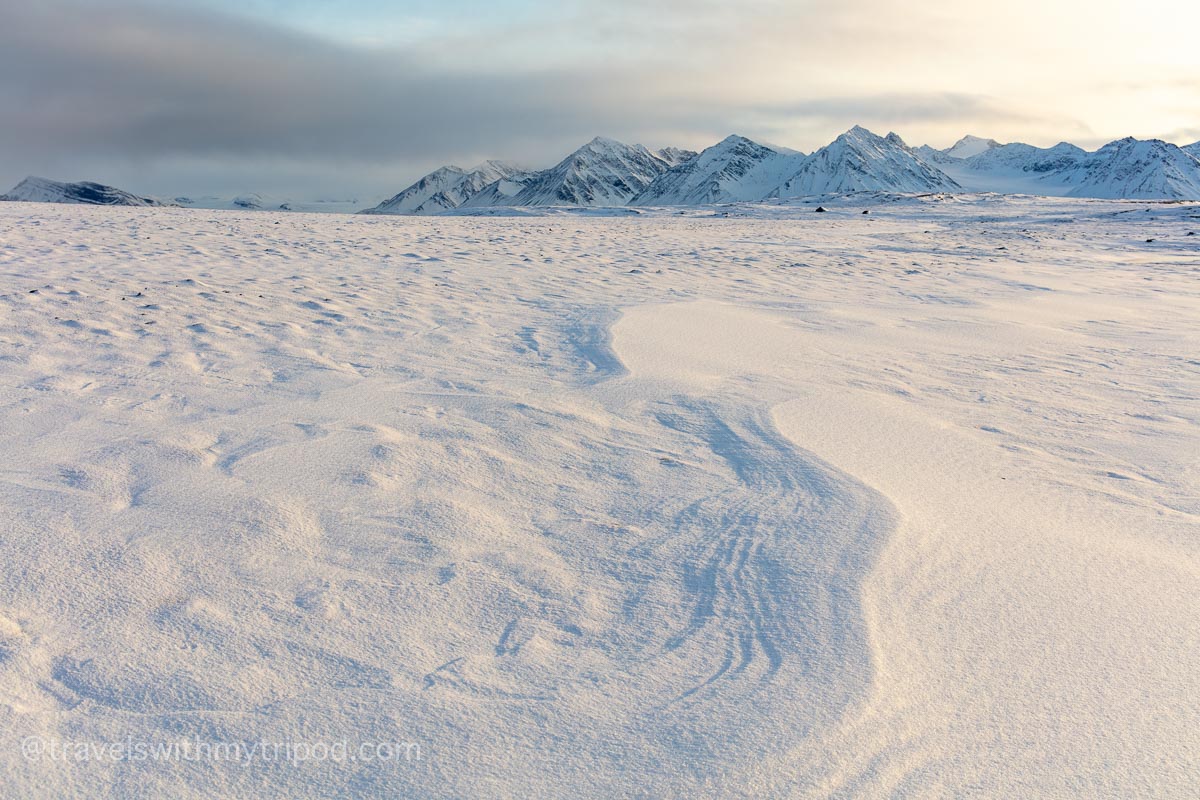
We spotted another herd of reindeer wandering across the tundra. There were also more signs of polar bear activity in the vicinity, with some fairly recent prints in the snow.
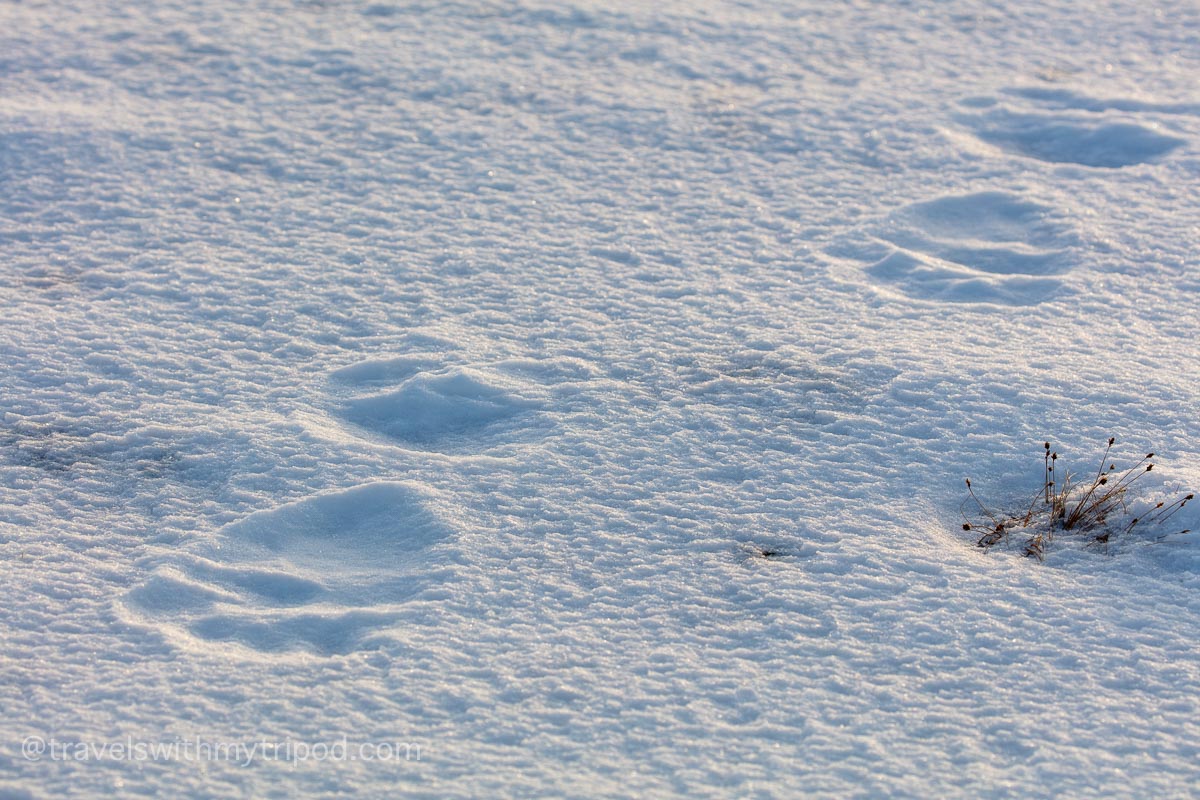
At this point though, our trip was nearly over and the ship was pointed towards Longyearbyen.
Skansbukta
We weren’t quite done with Svalbard though, and on our final day at sea we had a couple more stops to make. As an added bonus, the full moon was visible over the rugged landscape near Pyramiden as we spent our final morning at sea.
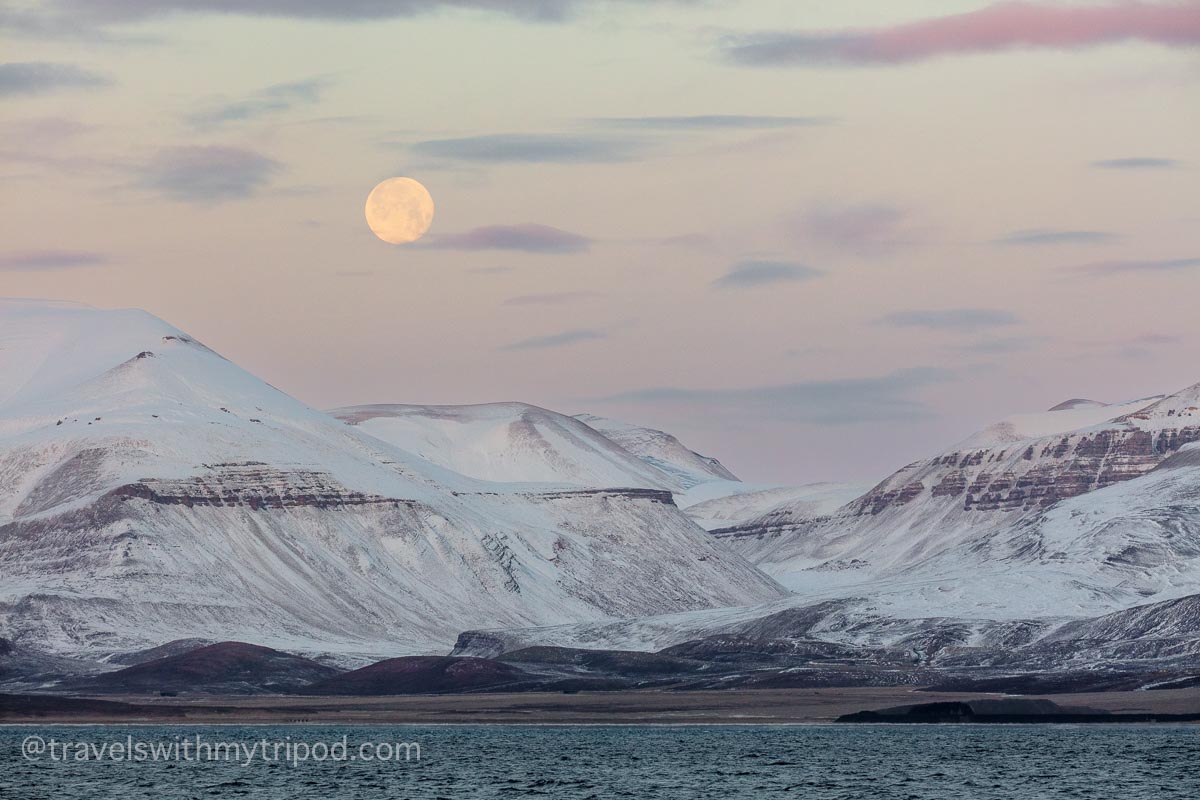
The first stop was a rather windy and cold Zodiac ride out to see another glacier. It’s always fascinating to get close to these huge, ever-changing ice caps. This was no exception, although it was striking how clean the exposed rock was – illustrating how much had been recently uncovered by the retreating ice.
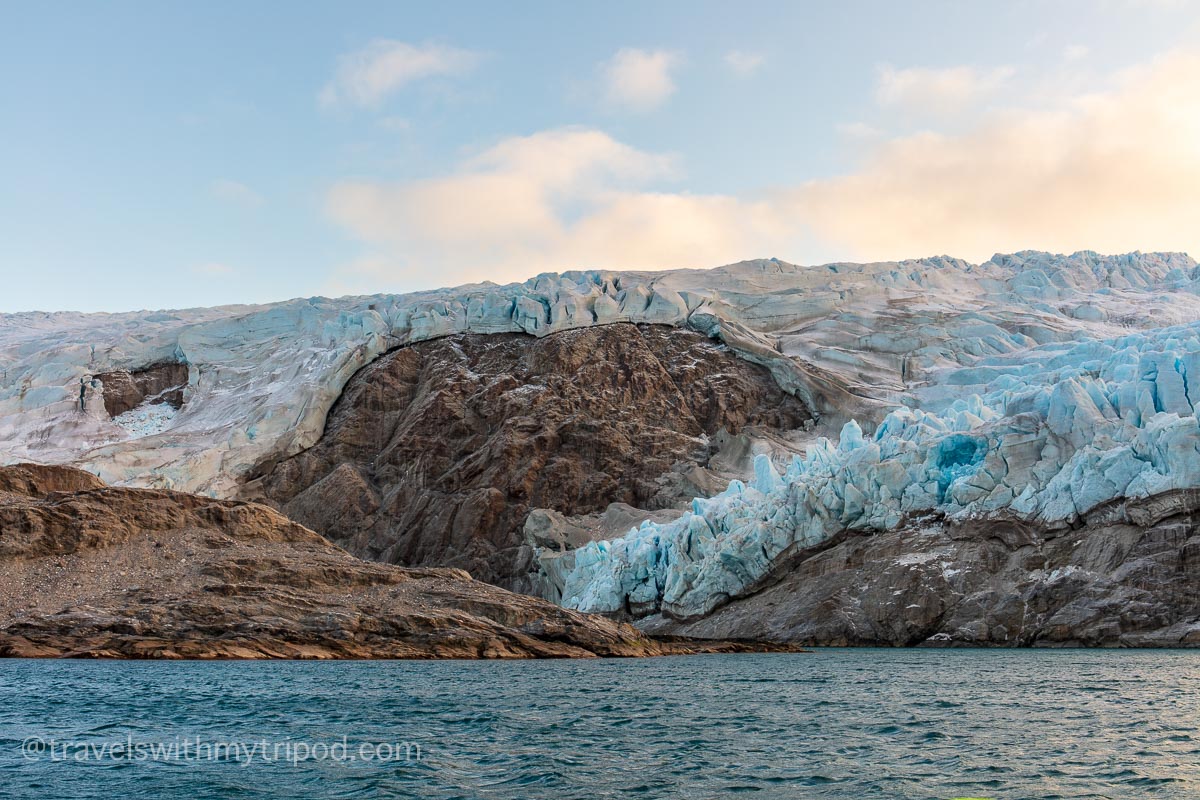
Next up was an afternoon trip to Skansbukta, the site of an old gypsum mine. Tucked under the imposing cliffs of Skansen lay the remains of previous human endeavour. The carcass of an old wooden barge sat on the beach, slowly disintergrating over time. The twisted remains of the old mining railway pointed out to sea from the entrance of the mine.
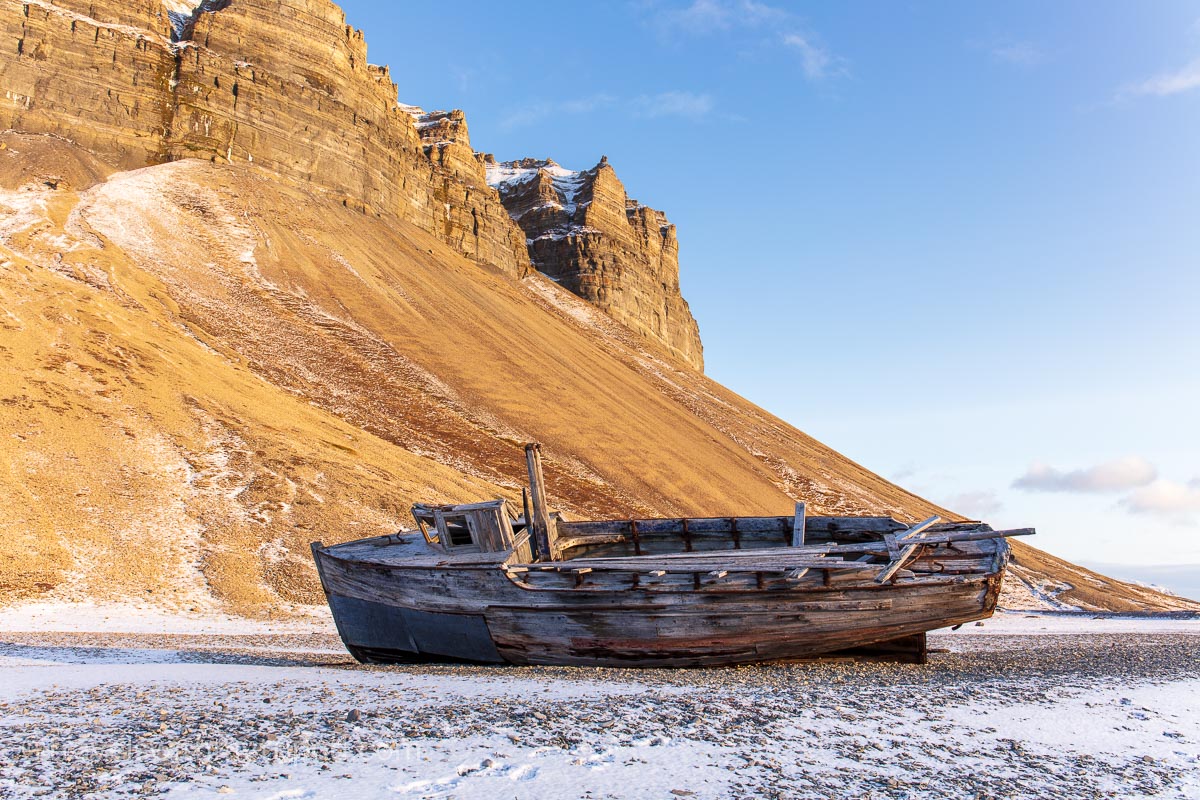
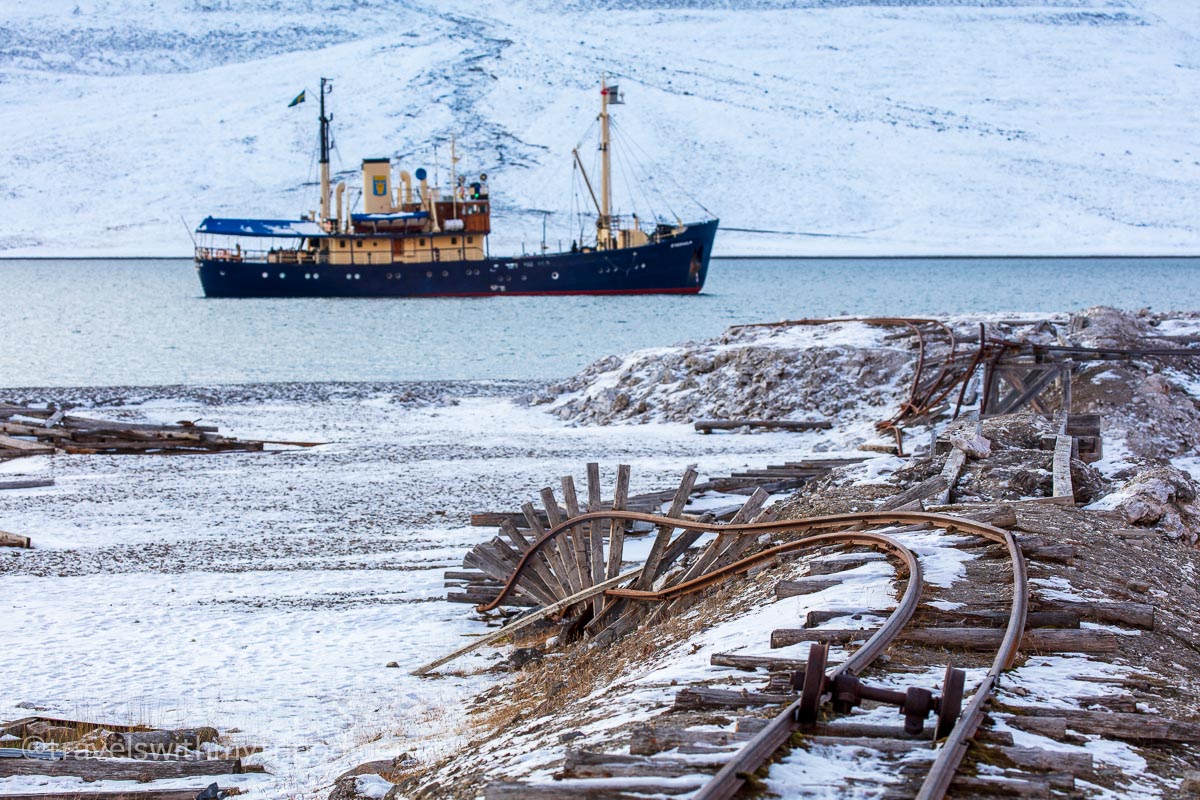
Despite humans only being active here for a handful of years, these remains have sat here for decades. This really illustrated to me the long-lasting impact humans can have on the landscape.
My final thoughts on Svalbard
I went to Svalbard wanting to photograph polar bears, but I came back moved and touched by the whole experience.
I was enchanted by this imposing, vast, stunningly beautiful wilderness that is both inhospitable, but also home to a plethora of different animals. It was also clear that they are having to adapt to changes in the size of the ice cap. While there is some debate as to the cause of these rising temperatures, the effects are undeniable. In addition, the animals here are having to contend with human pollution even in this remote location.
Here I really felt an intimate connection between the animals that call Svalbard their home, and the environment. It’s given me an even greater appreciation of the fragility of nature, and how it’s our responsibility to take care of it. I took away a lot of incredible memories, which I will treasure forever, and hope I’ve been able to share some of these magical experiences with you.
With special thanks to Zet and Kuba from Polar Quest for being such great guides. And the crew of M/S Stockholm for getting us safely there and back in such style and comfort.
Map of places visited
How to use this map: Click on the icon in the top-left corner of the map to reveal a list of locations. If you click on one of the locations in the list, or one of the pins on the map, you can get more information or directions to it.
Click on the star just to the right of the title to save to your Google Maps account. You can then view the map on your phone or computer by opening Google Maps, clicking the “Saved” icon and then selecting Maps. You’ll then see this map in your list.
To open a larger version of the map in a new tab, click on the icon to the top right.

